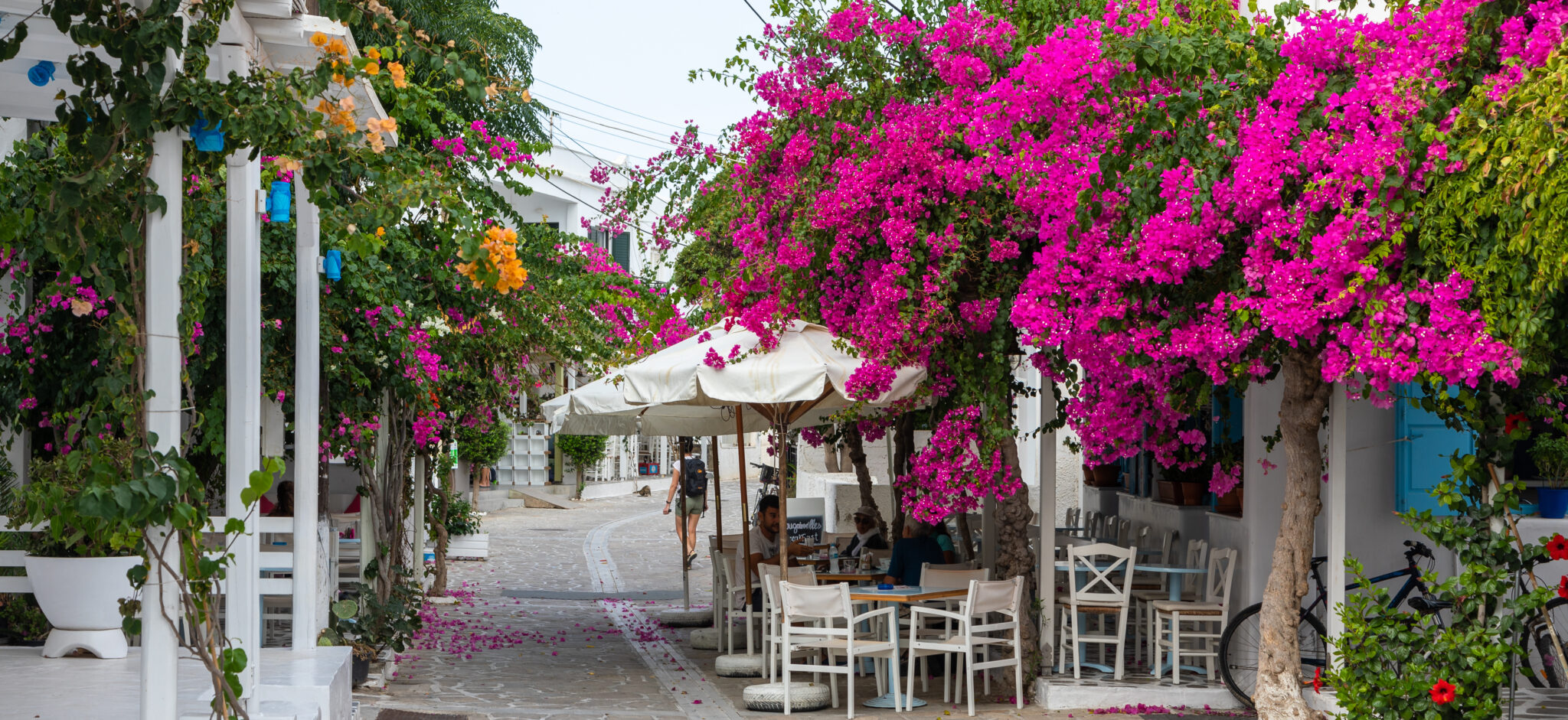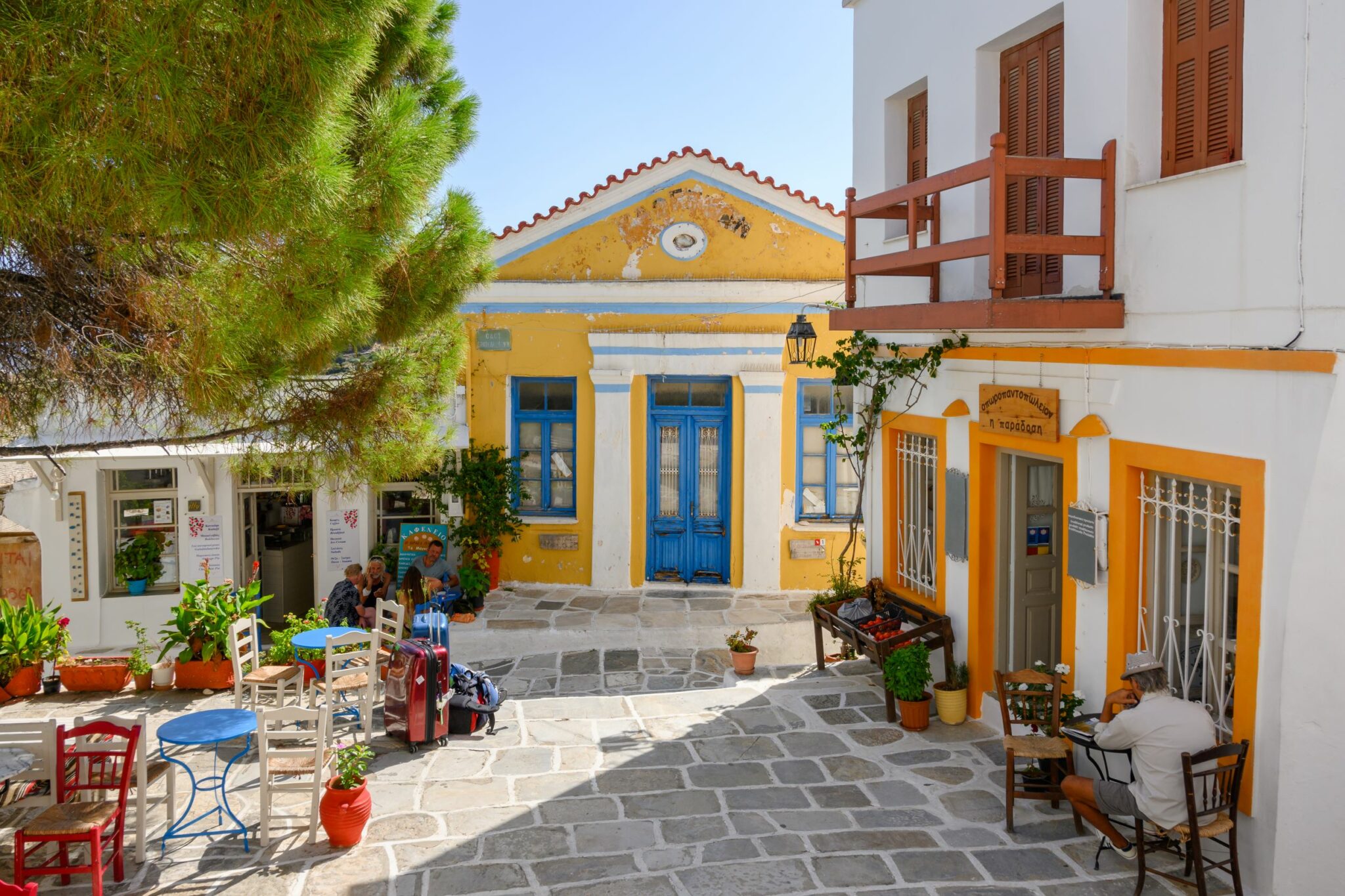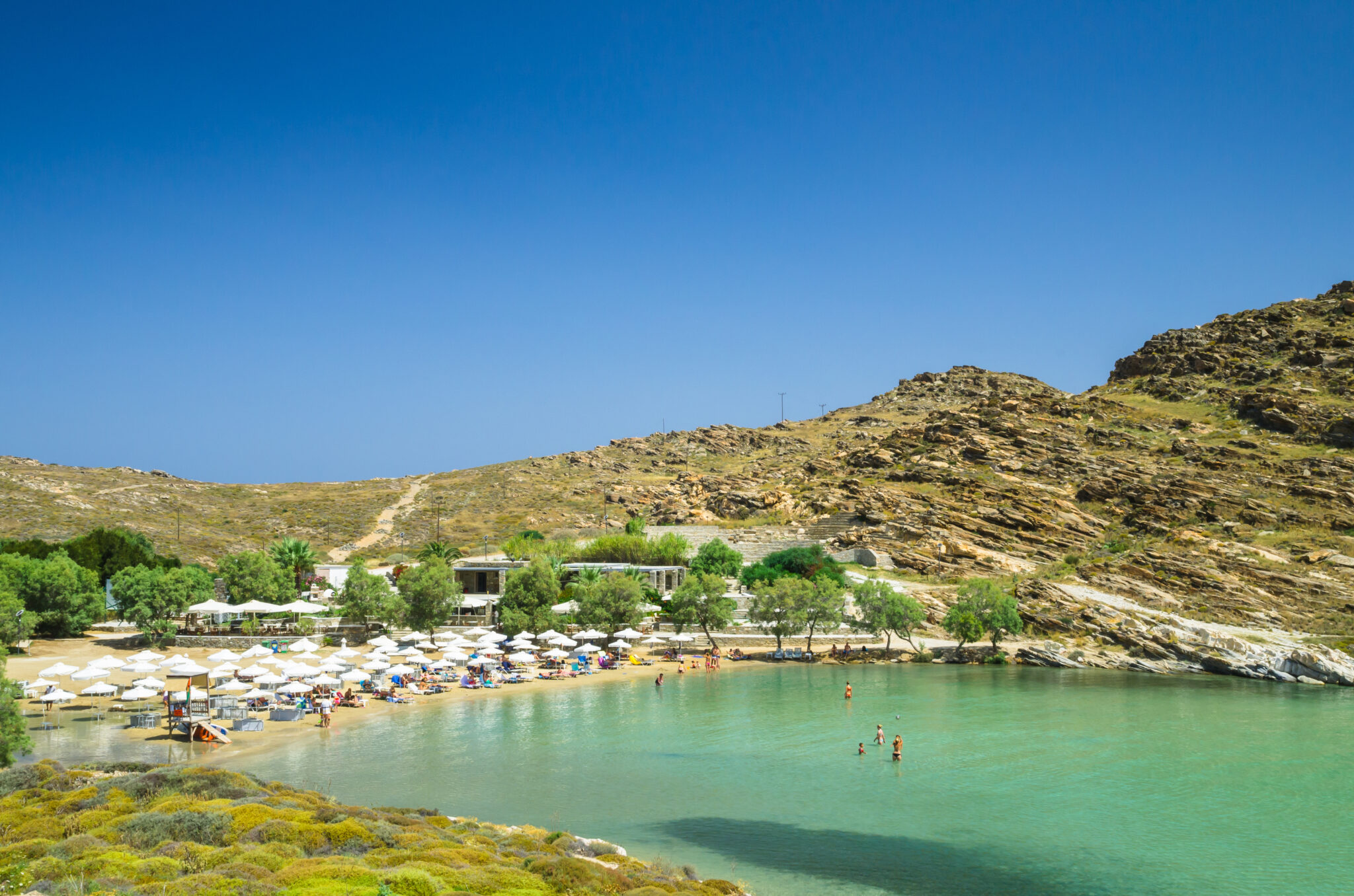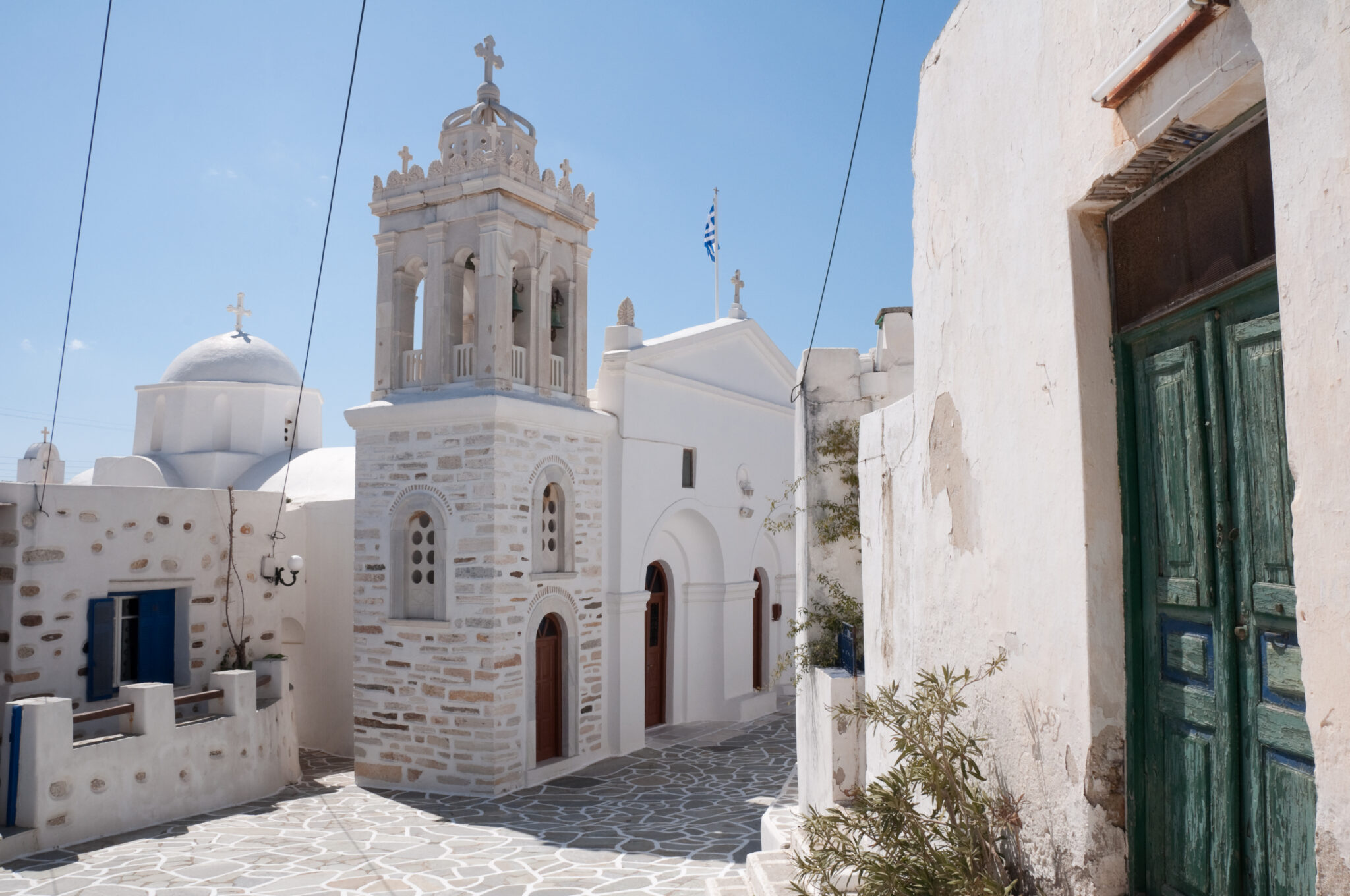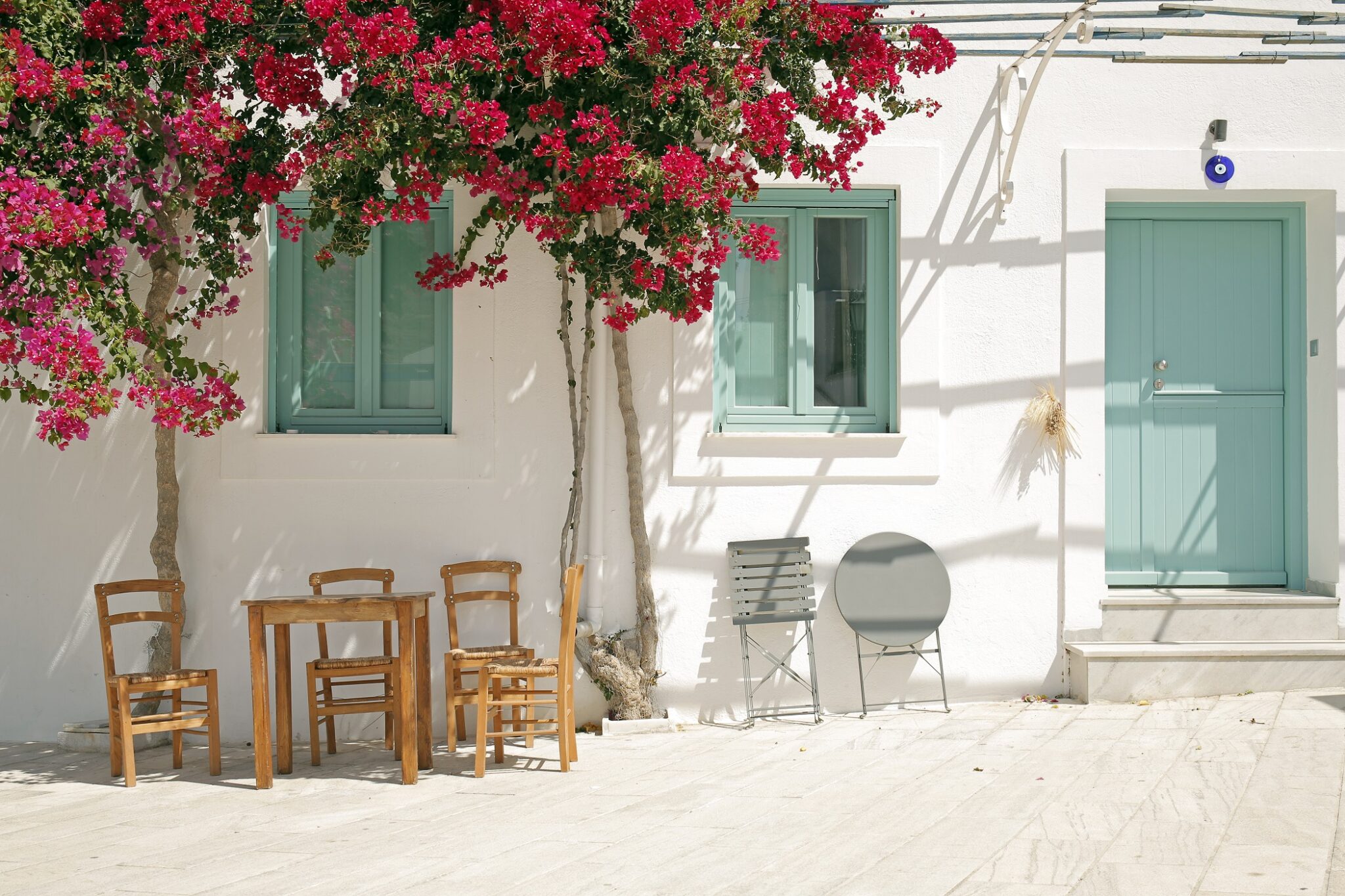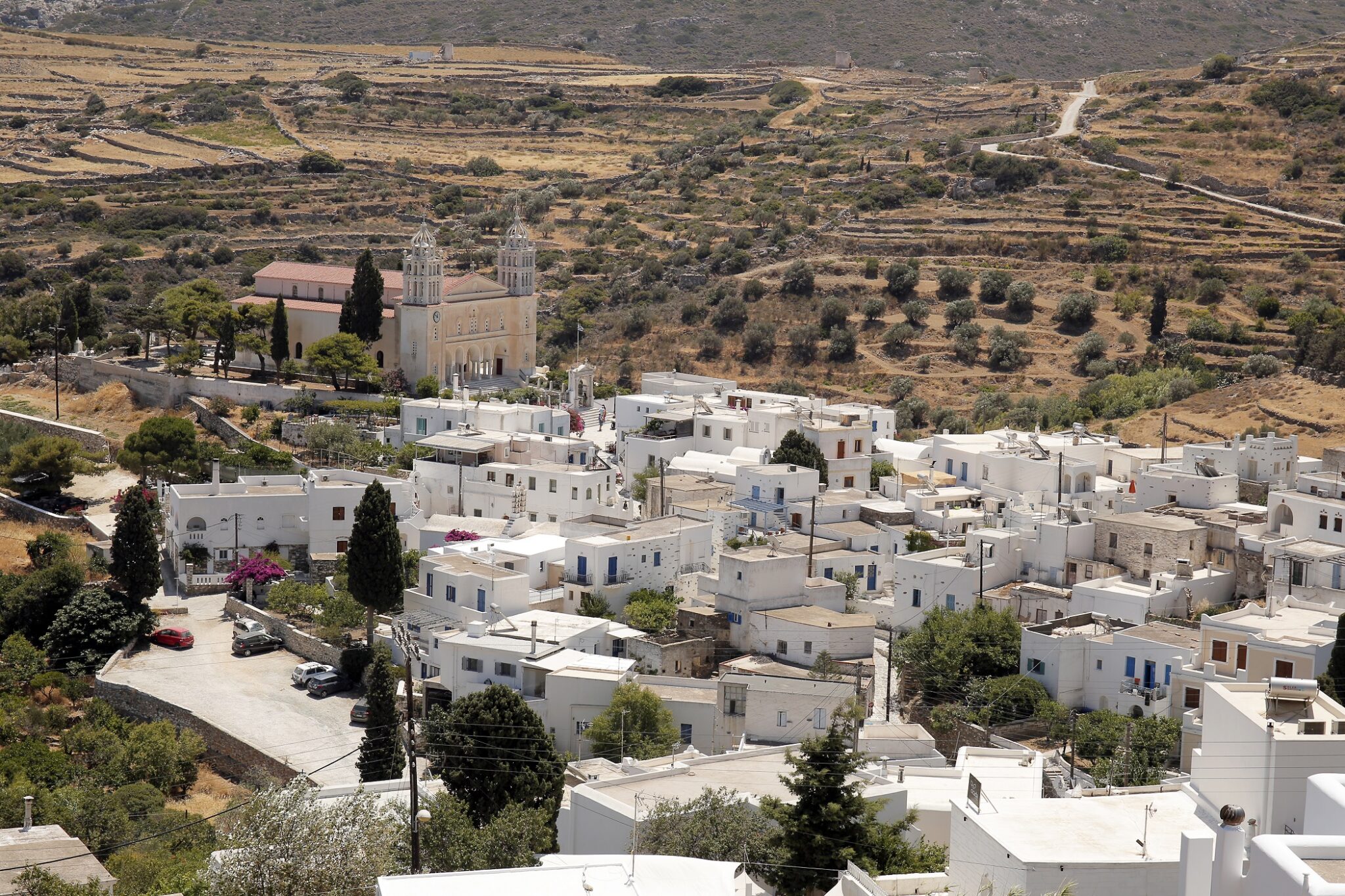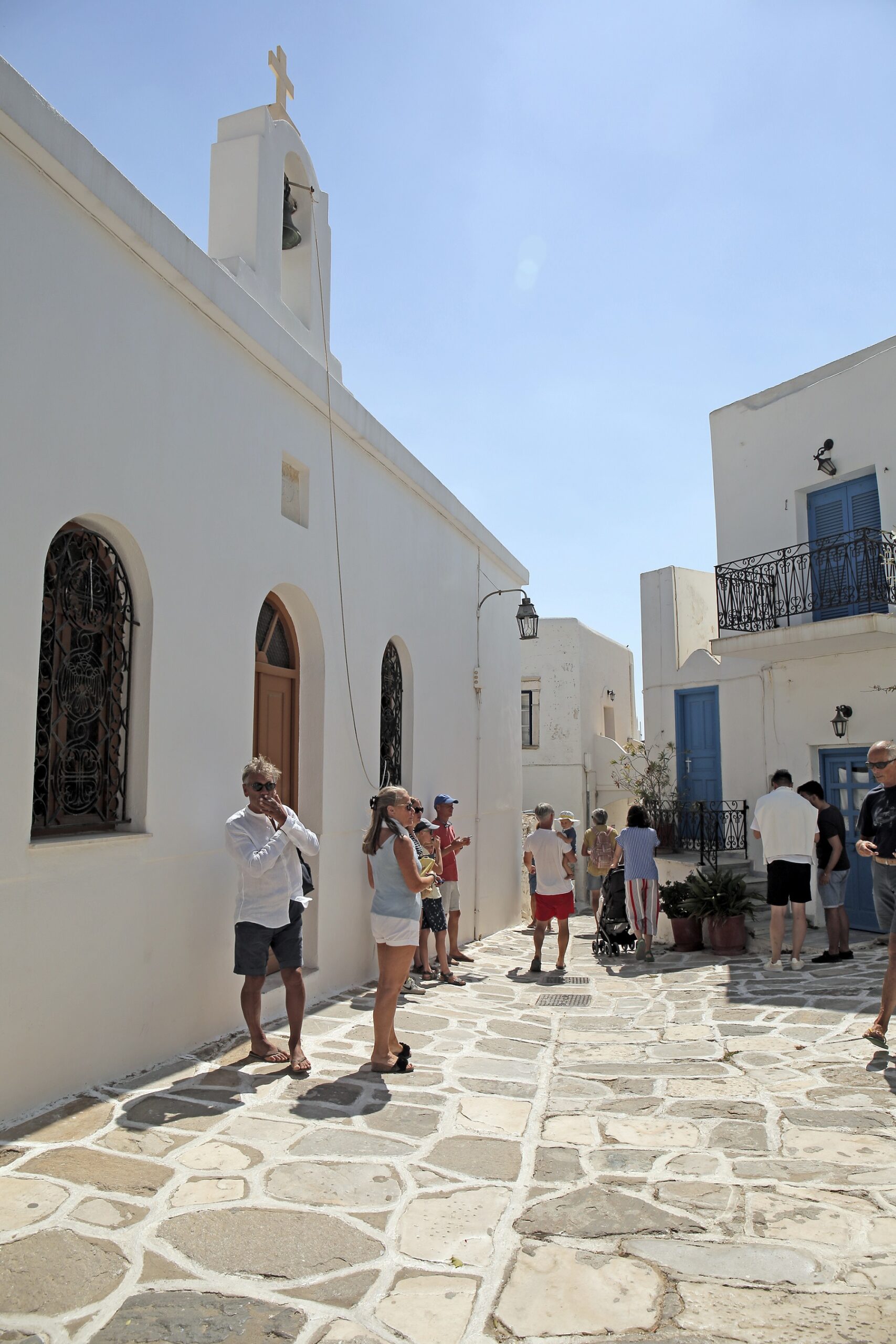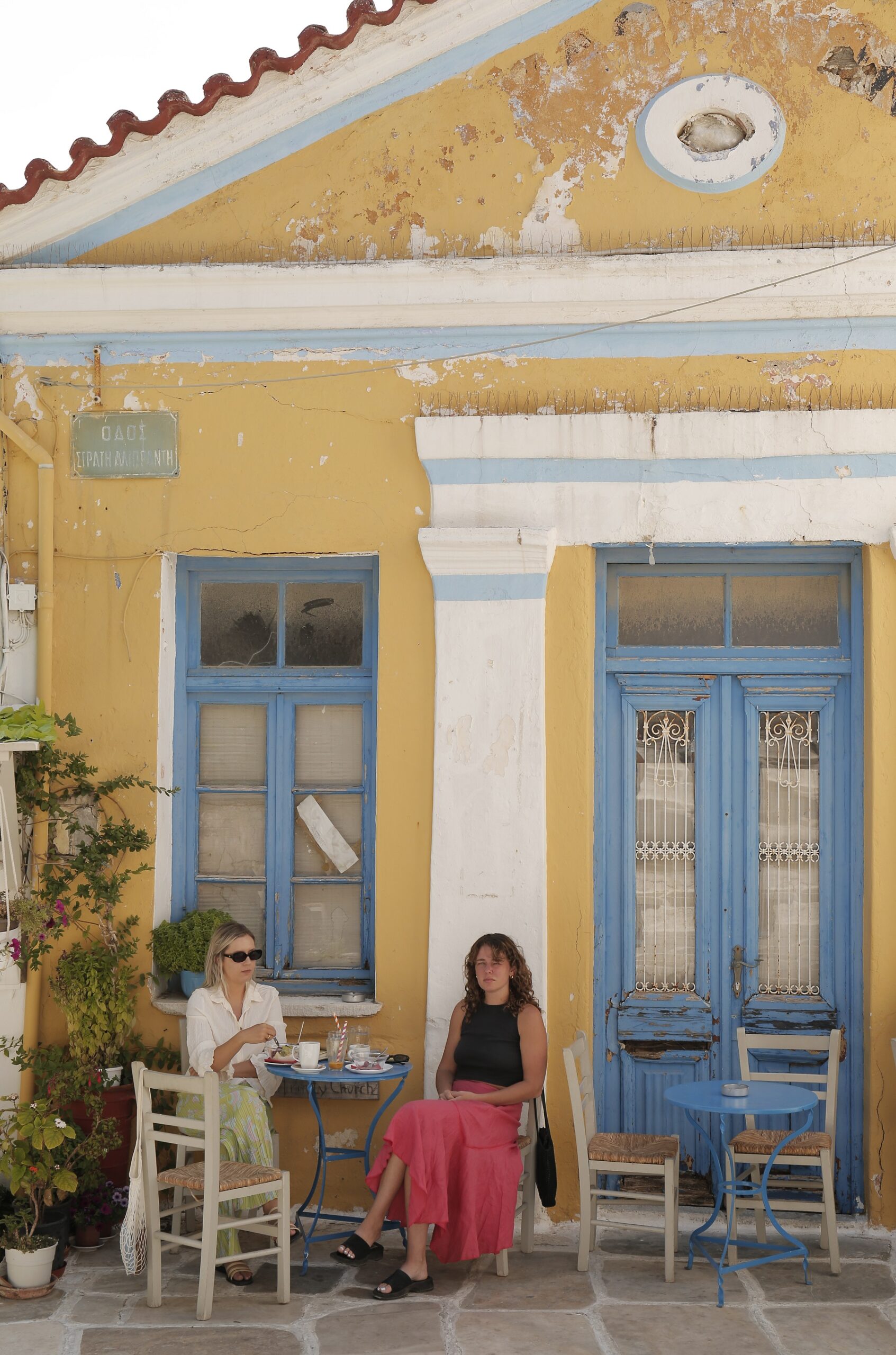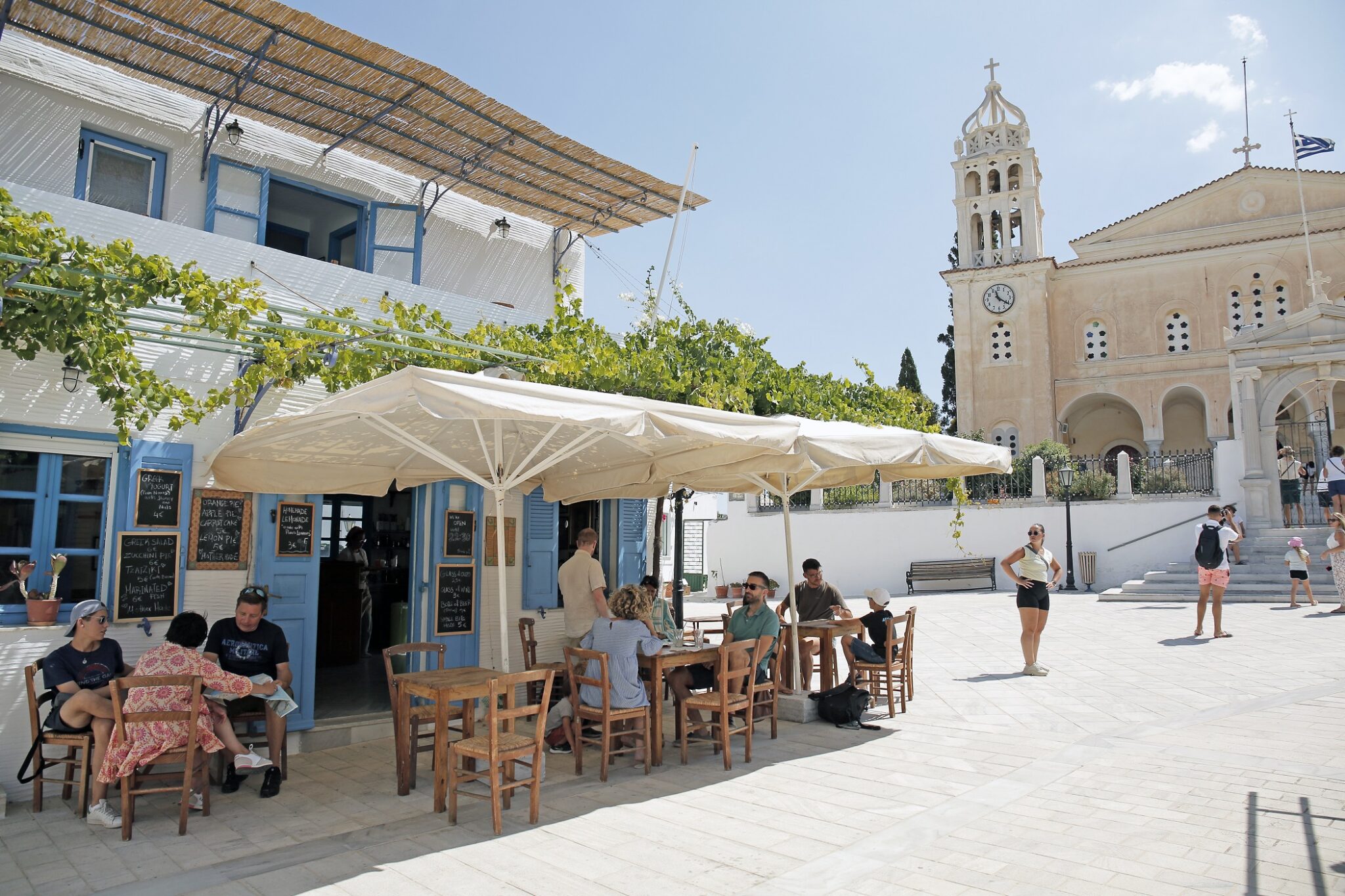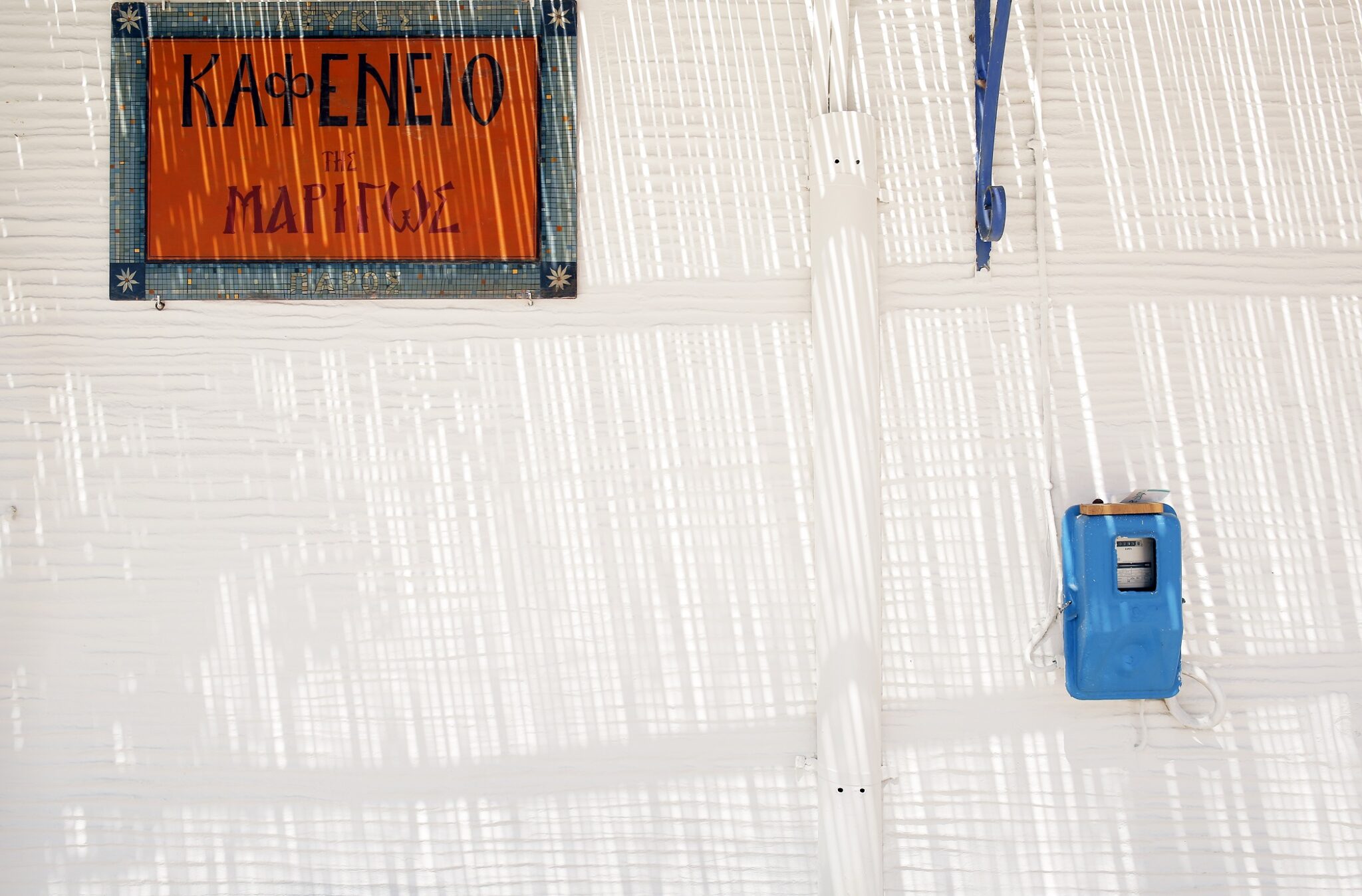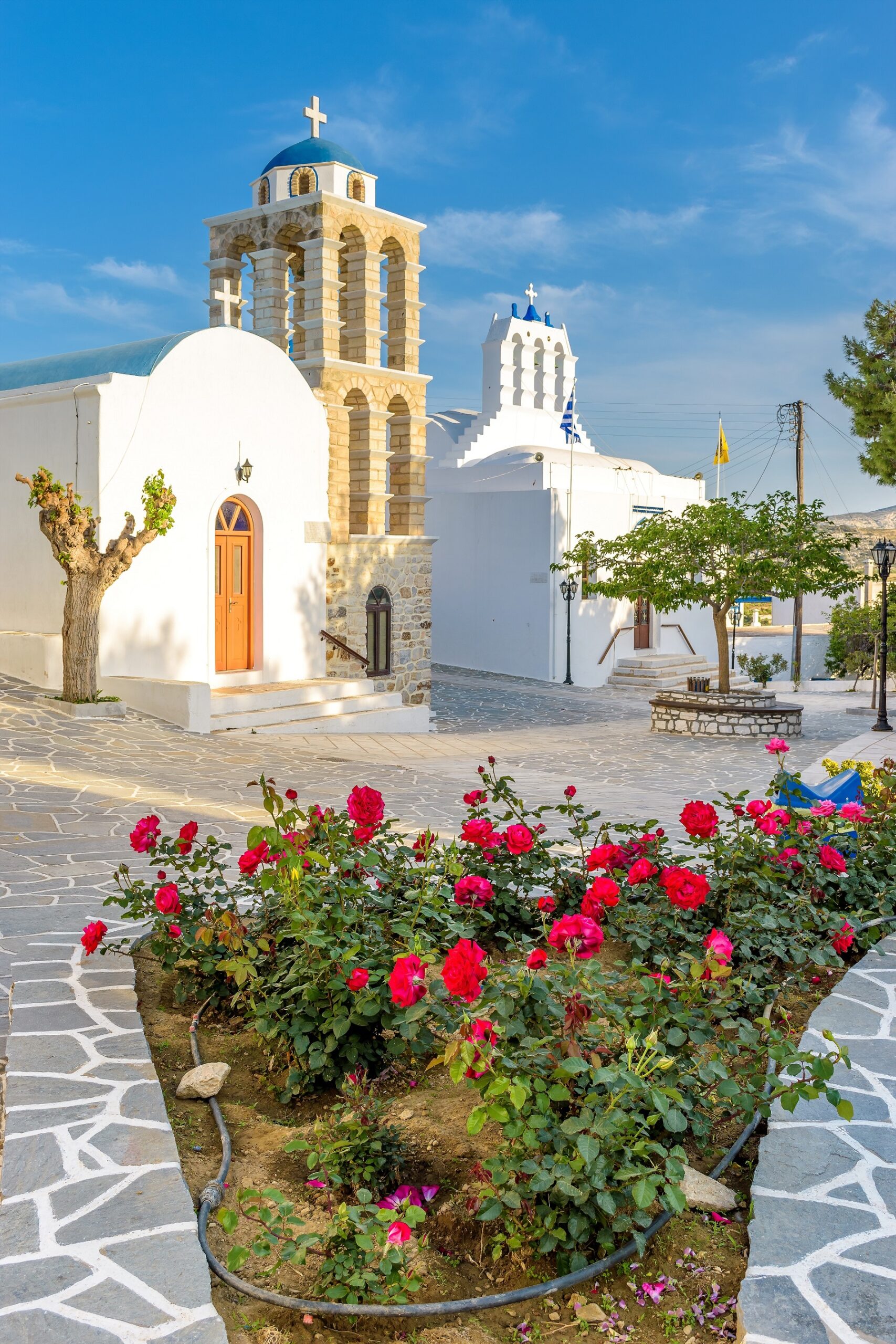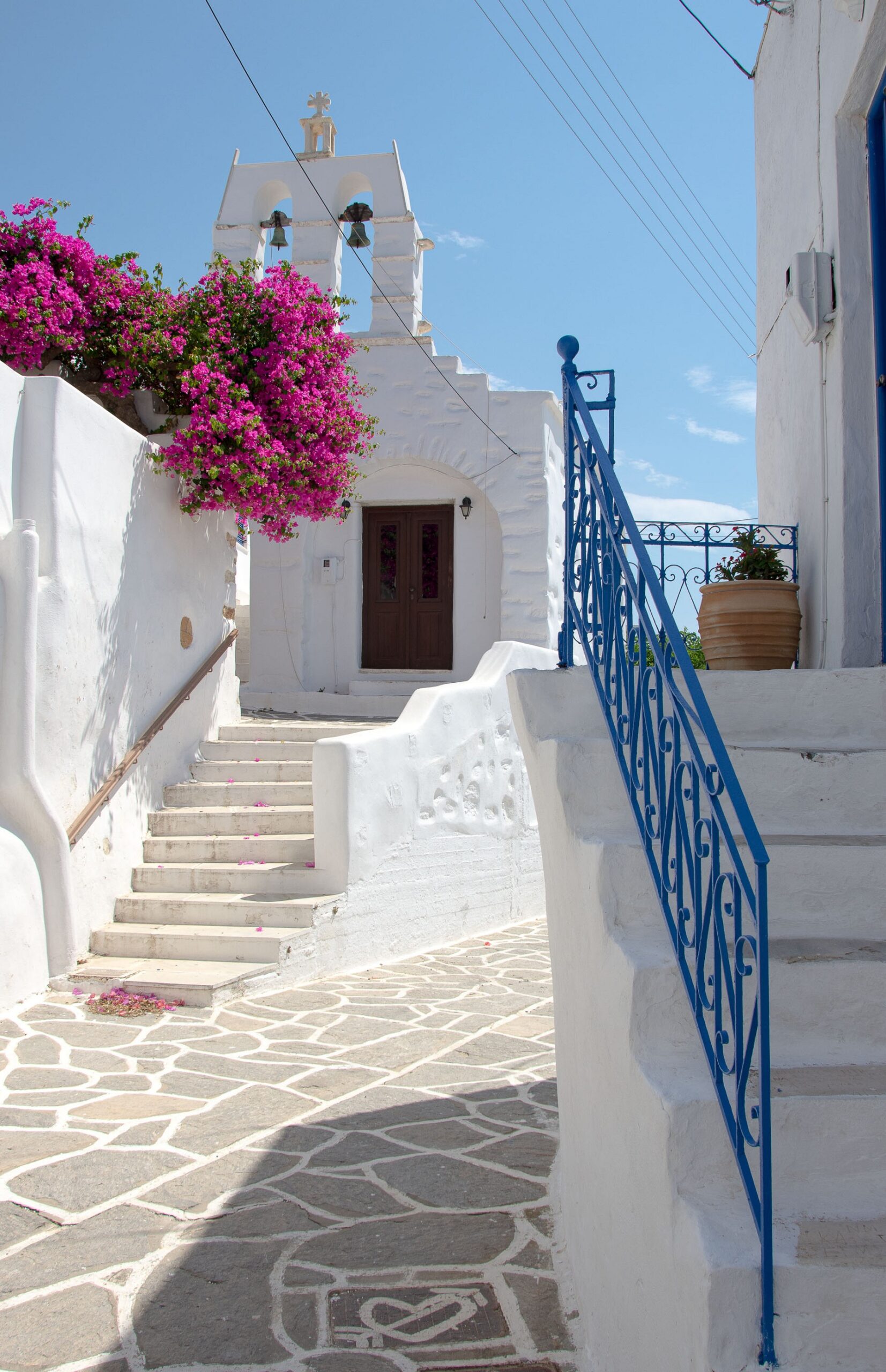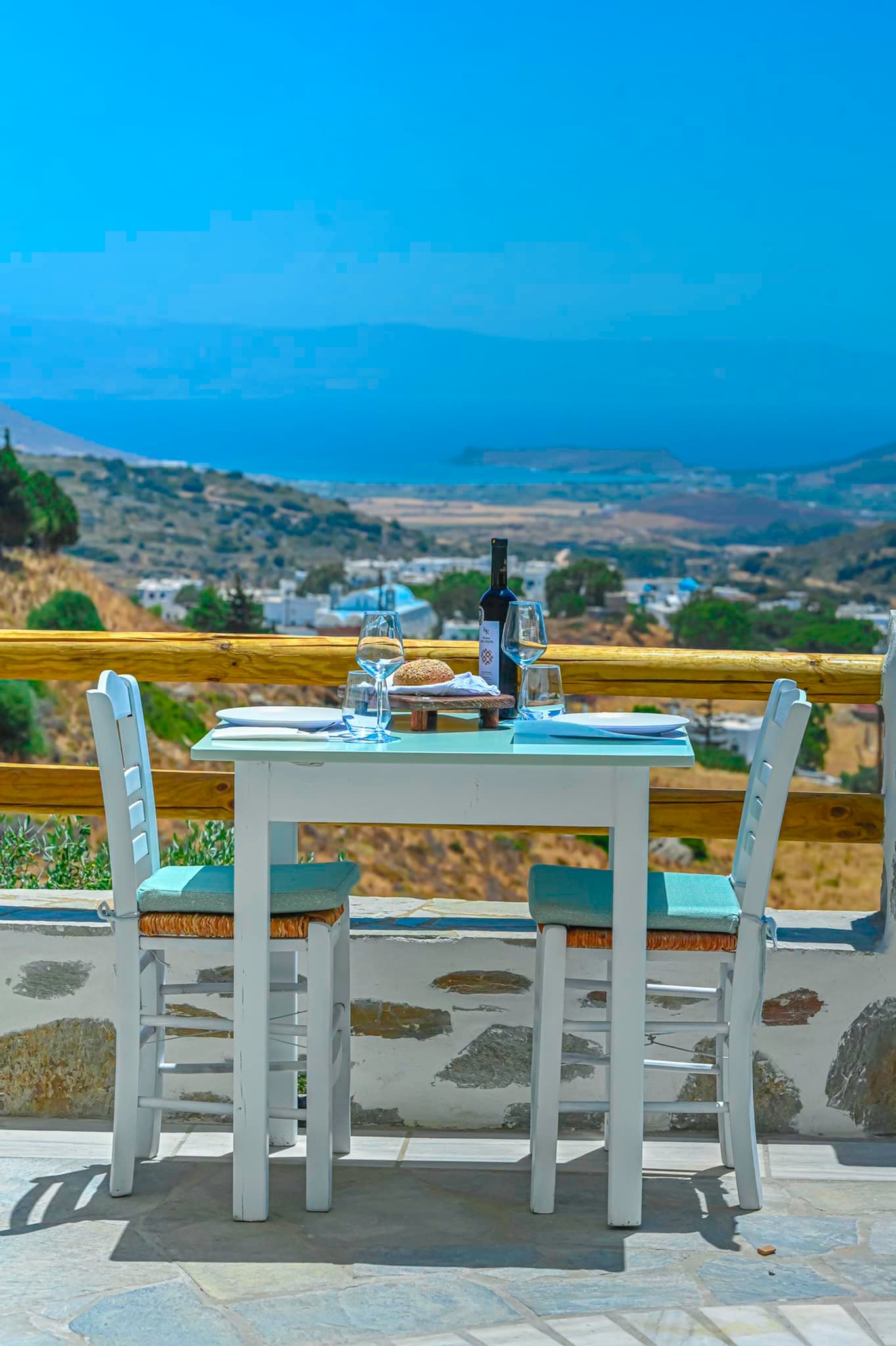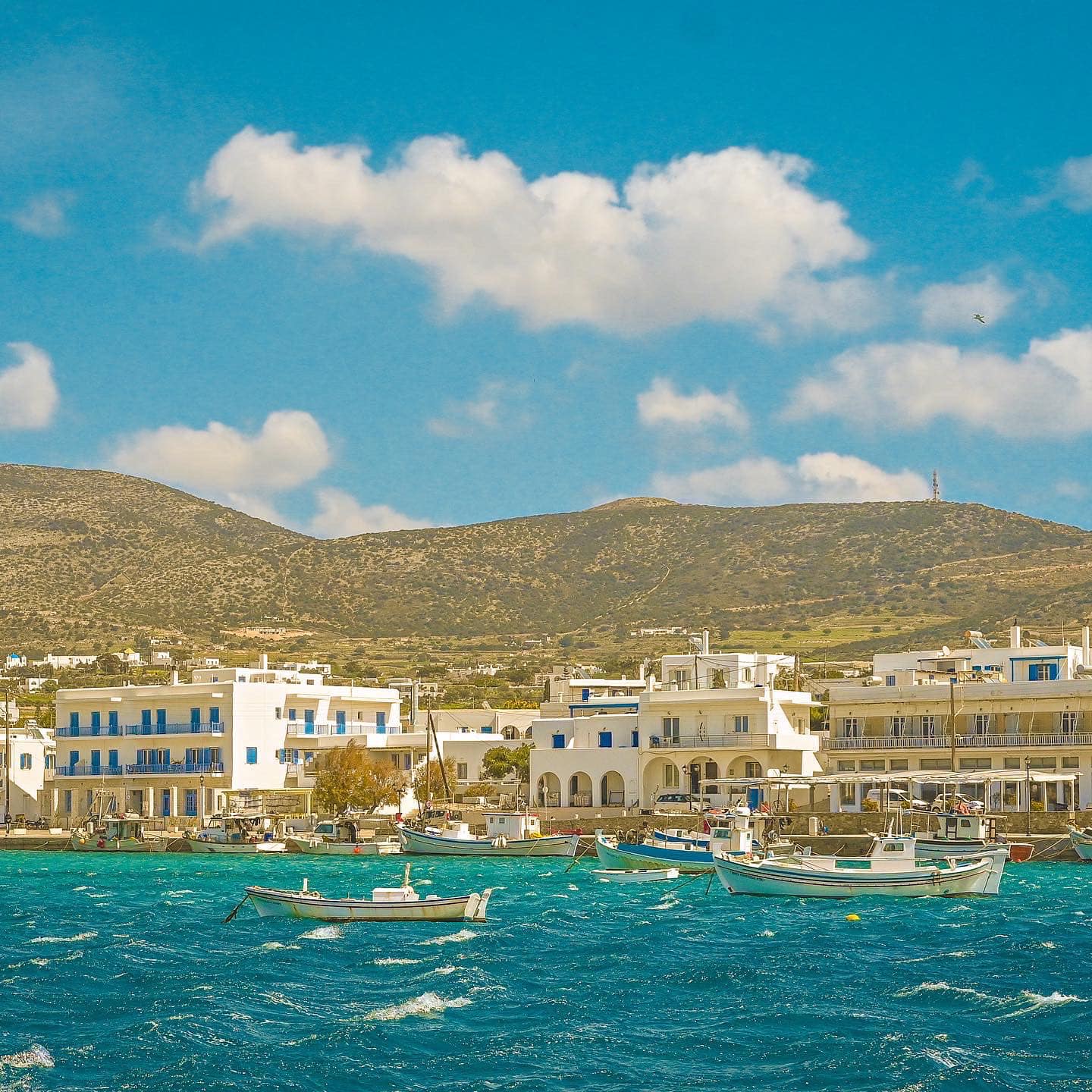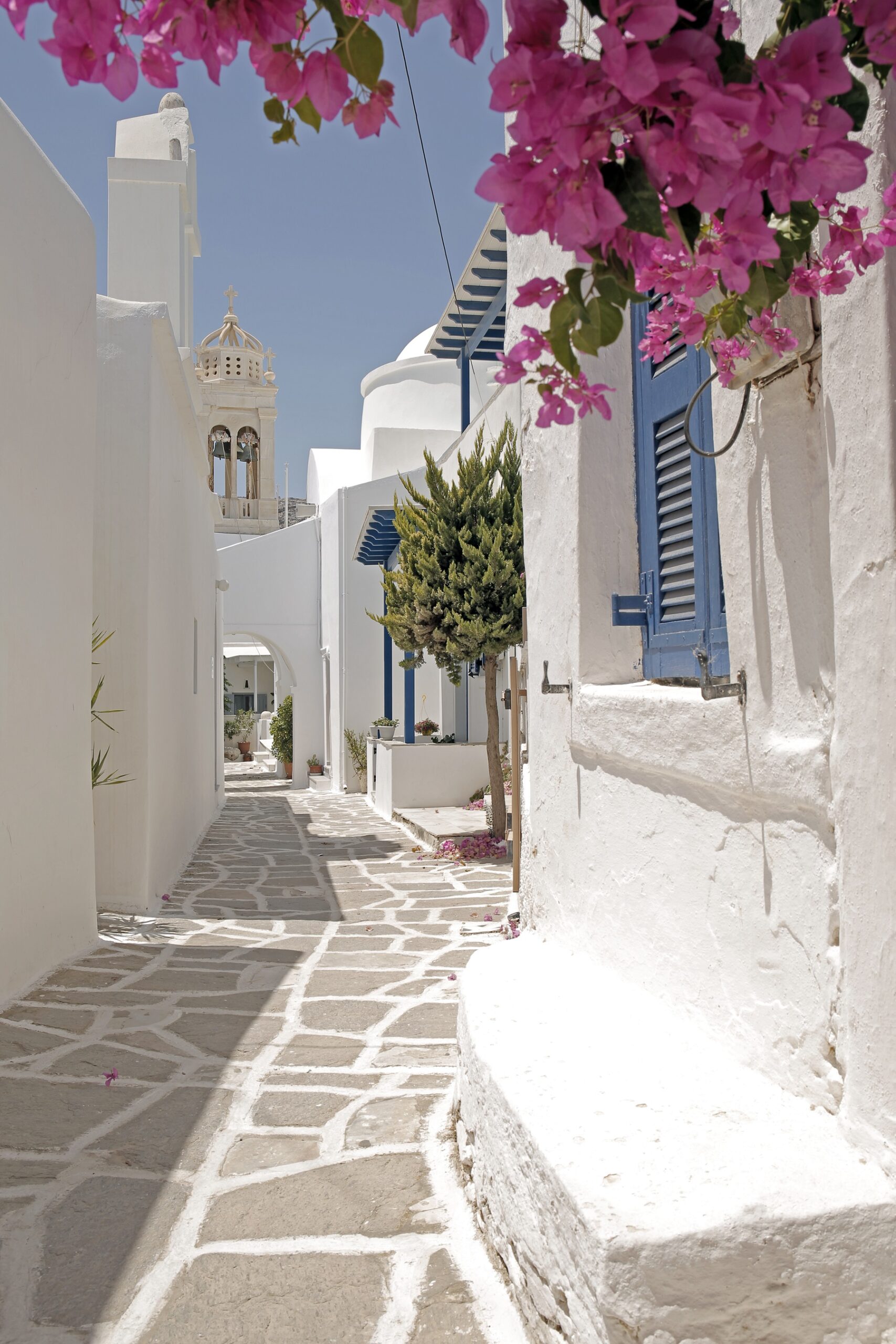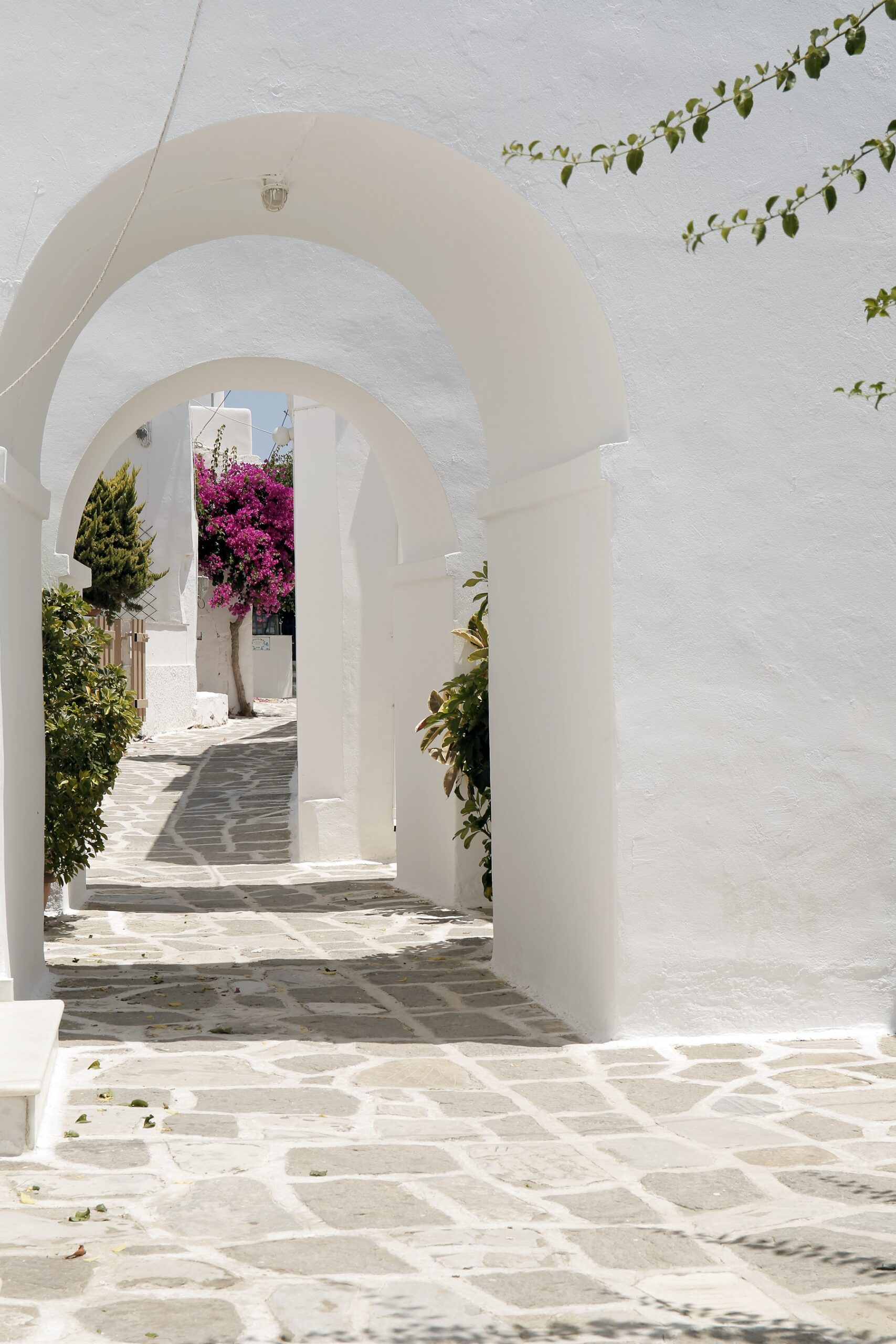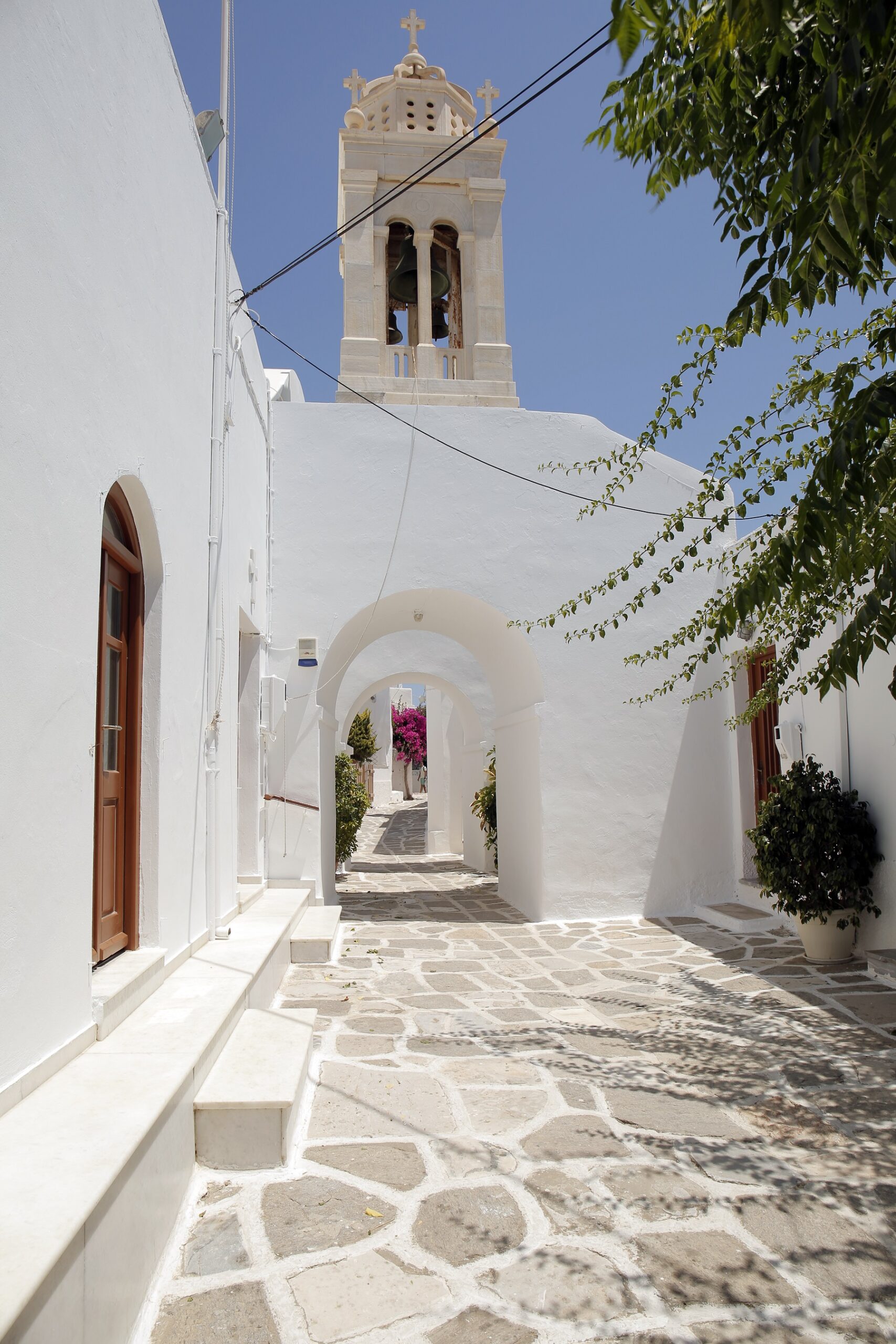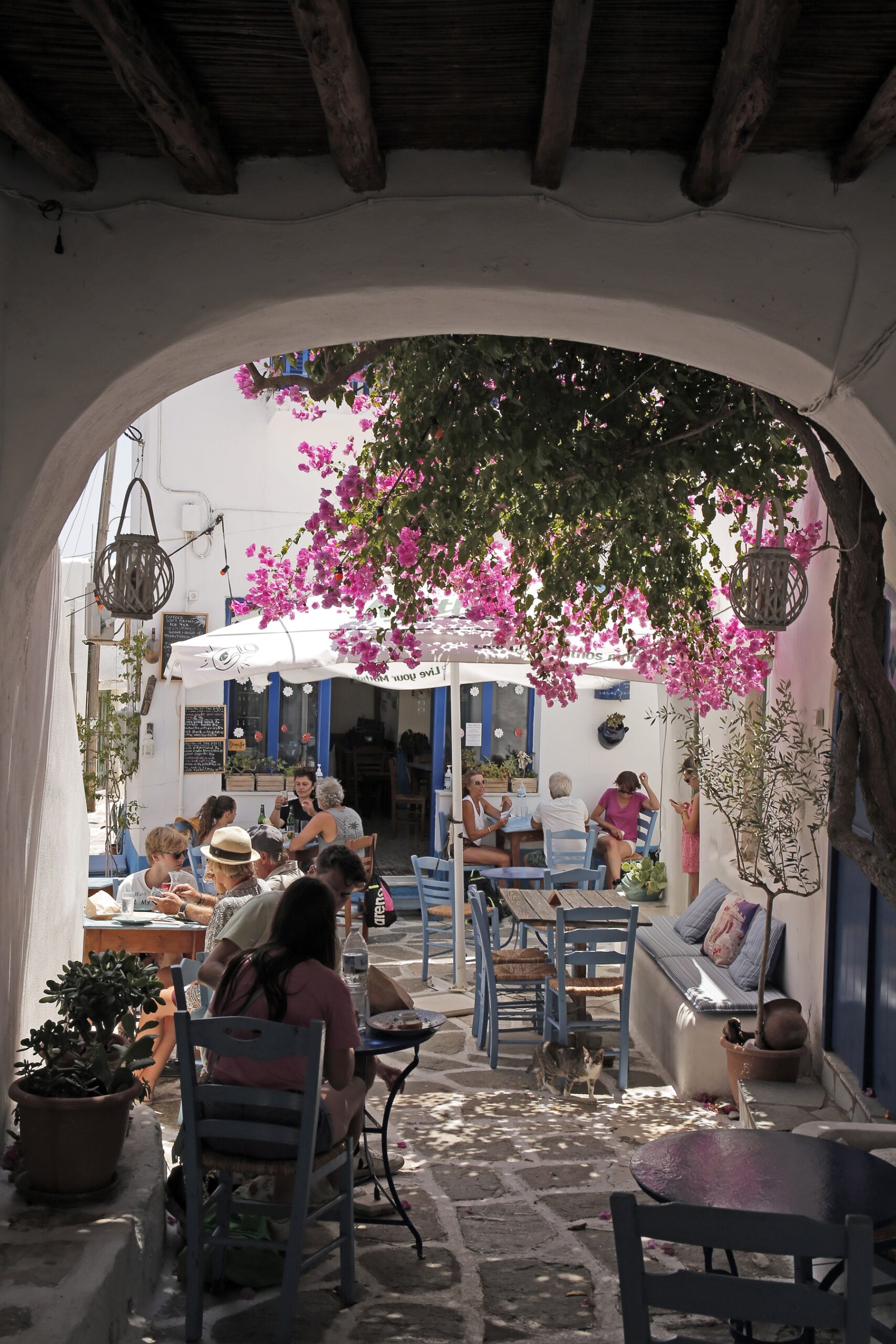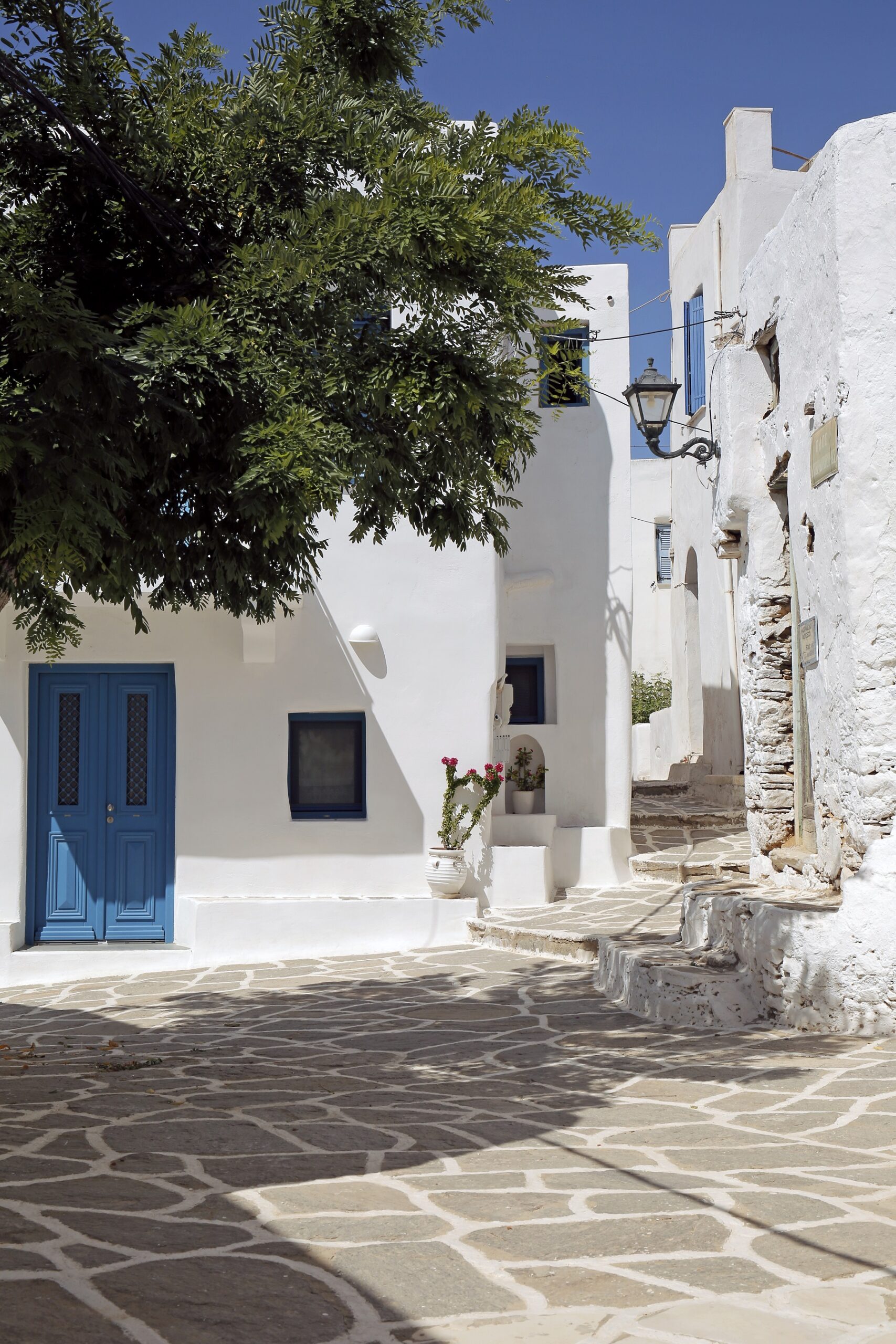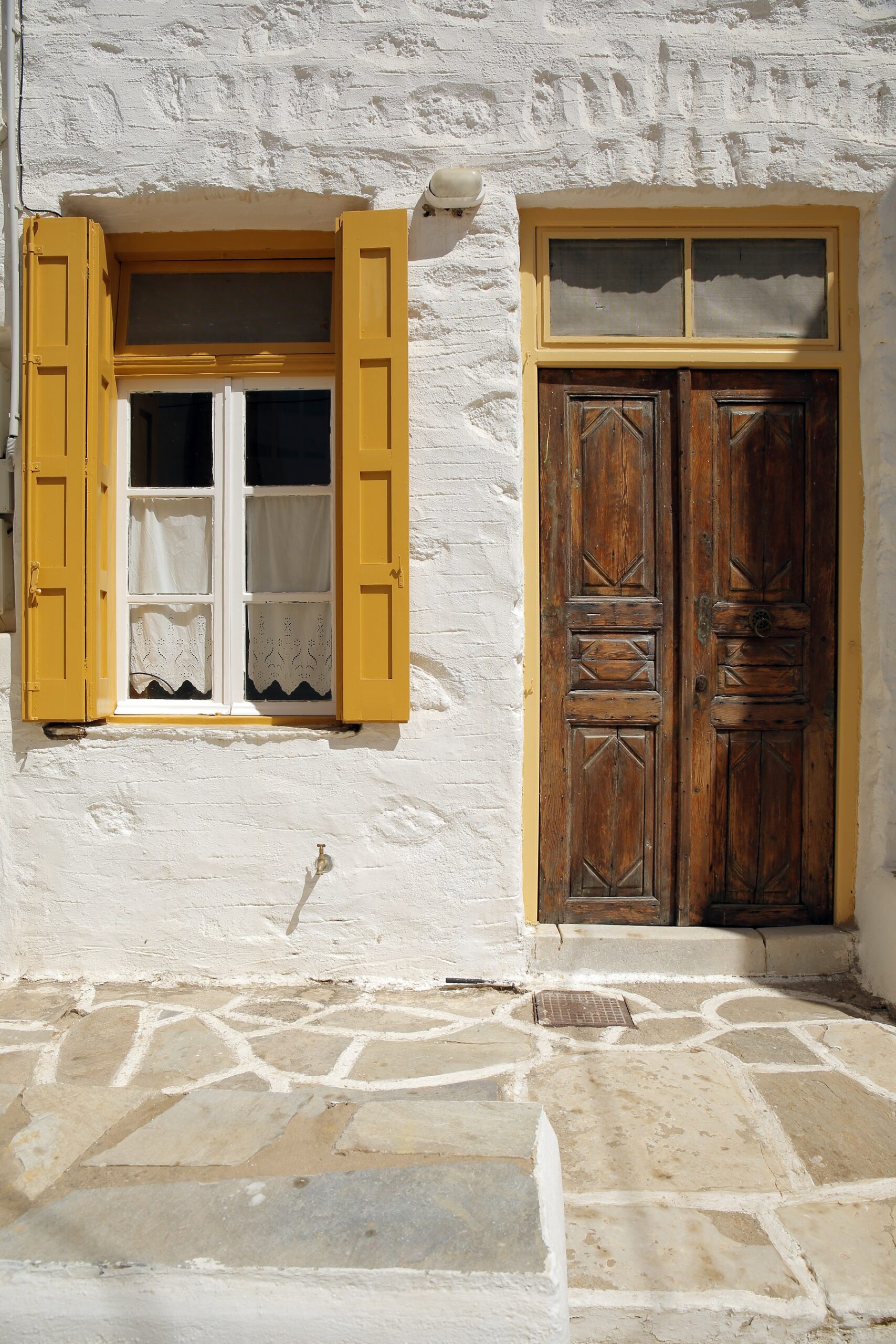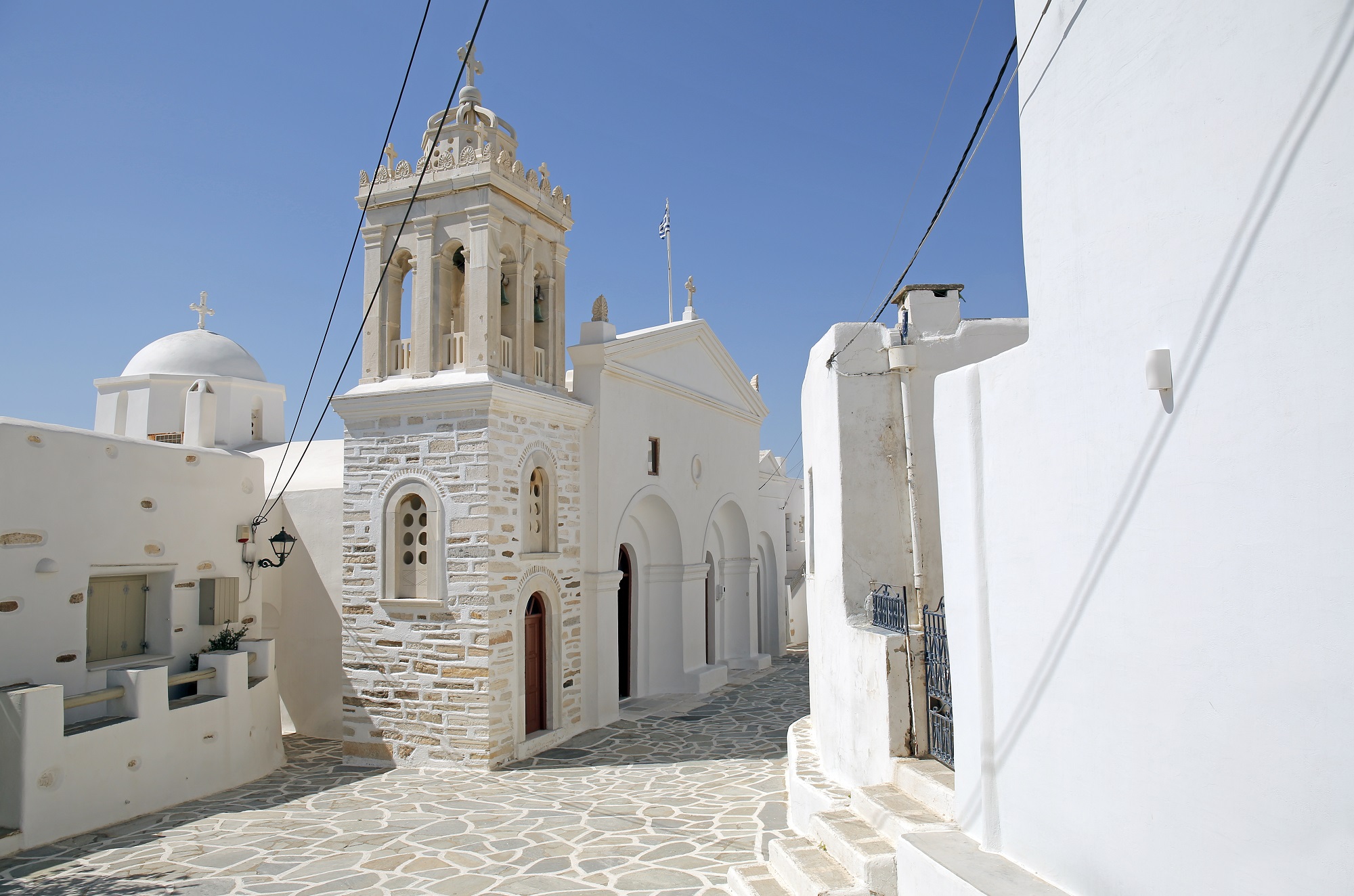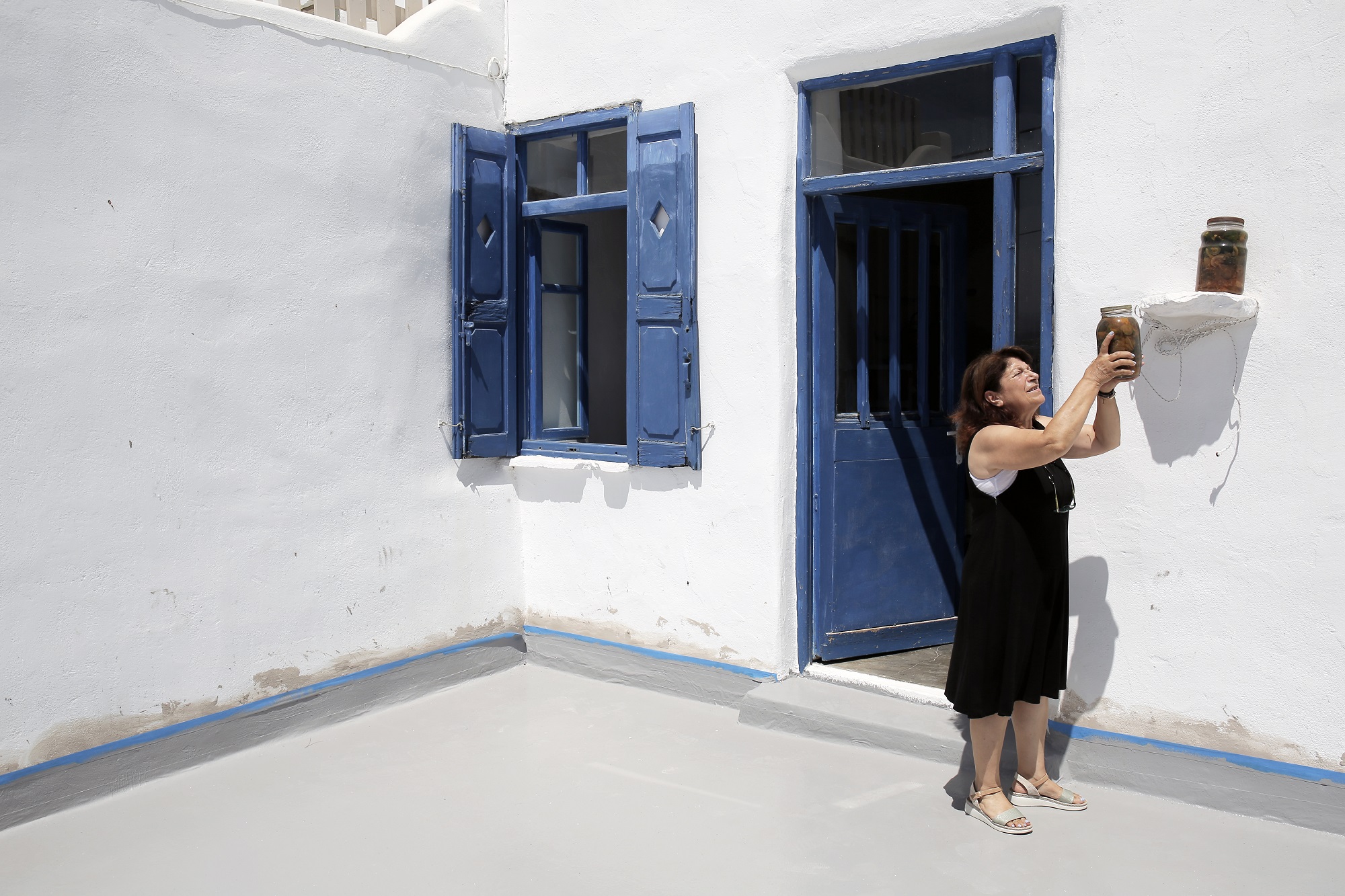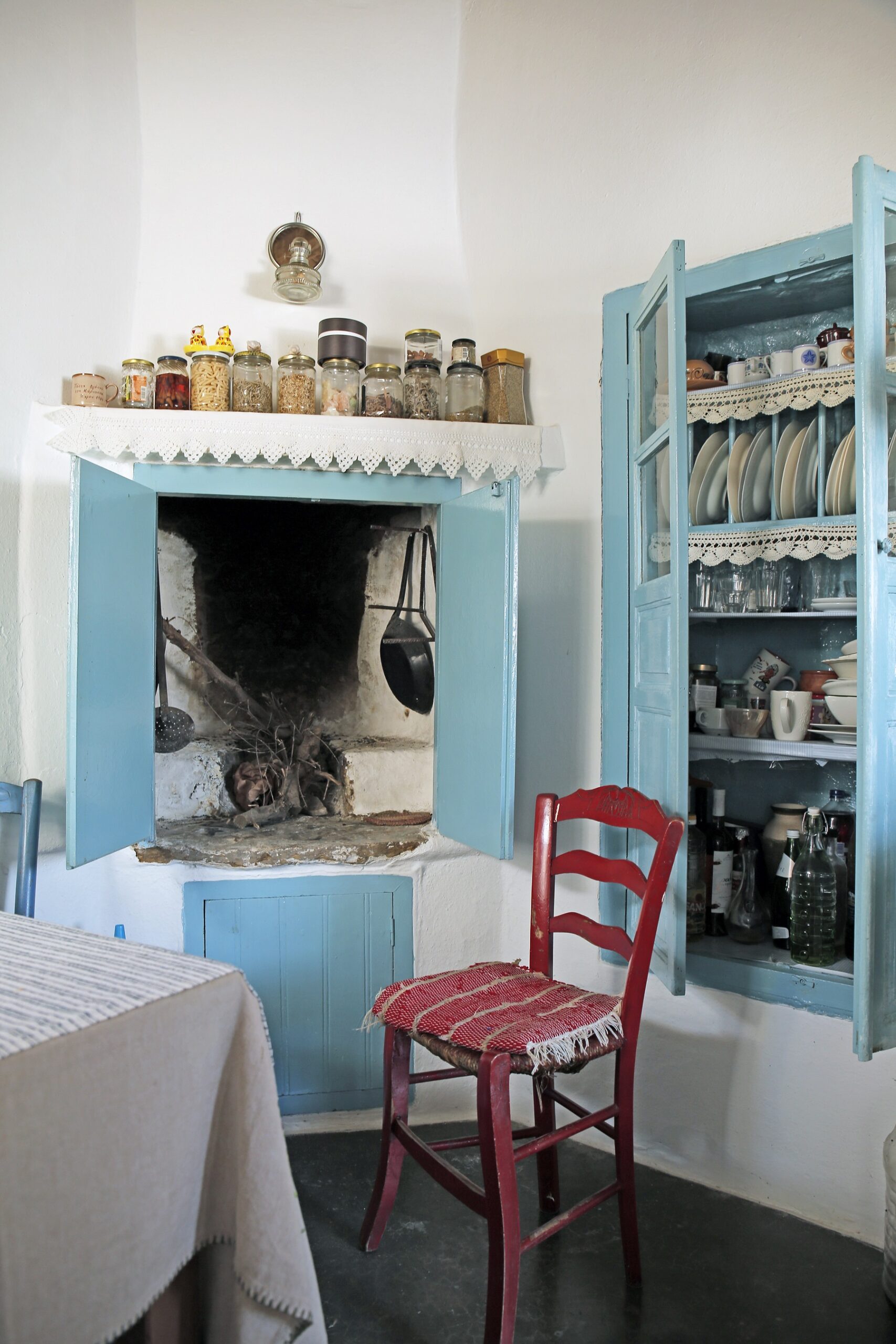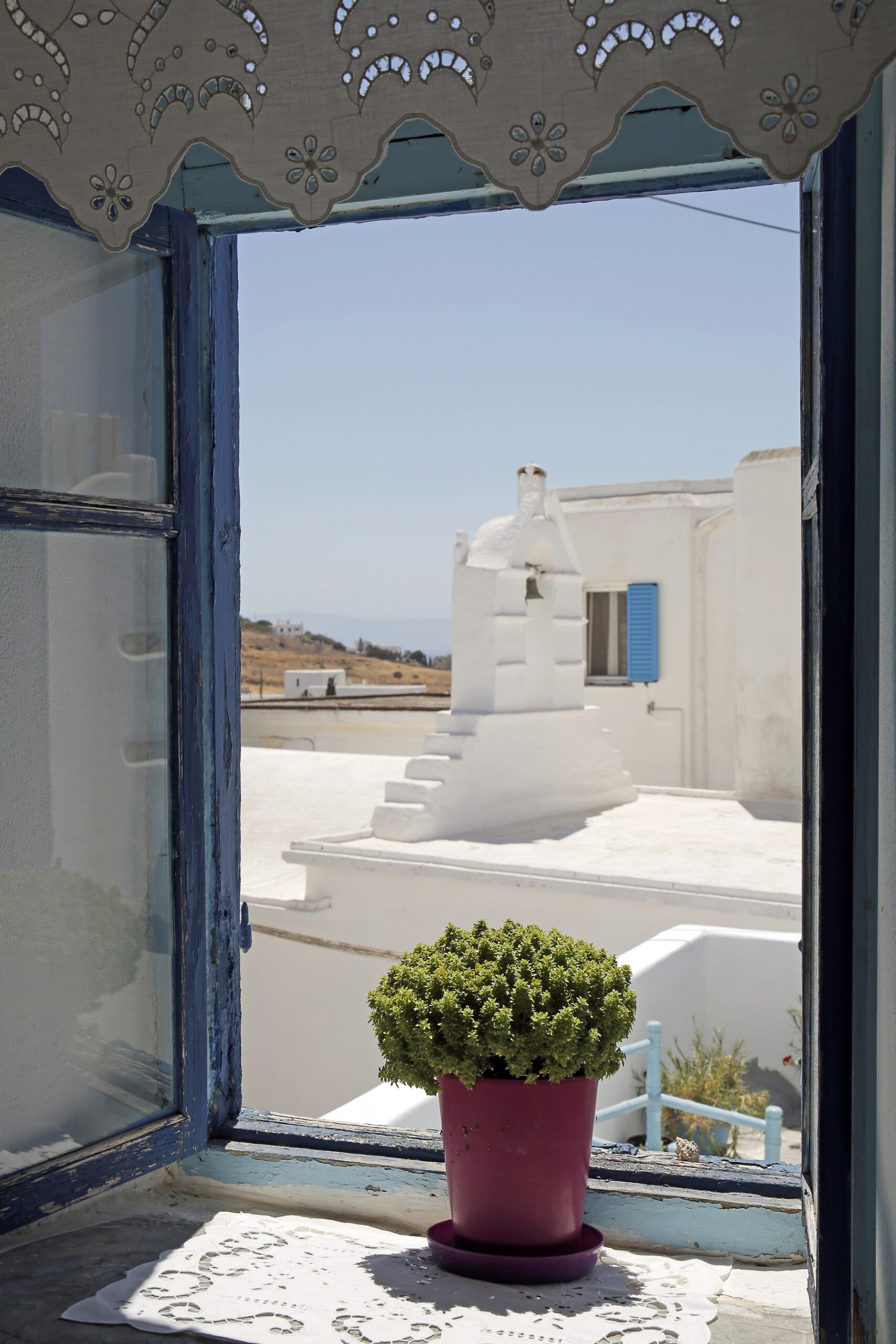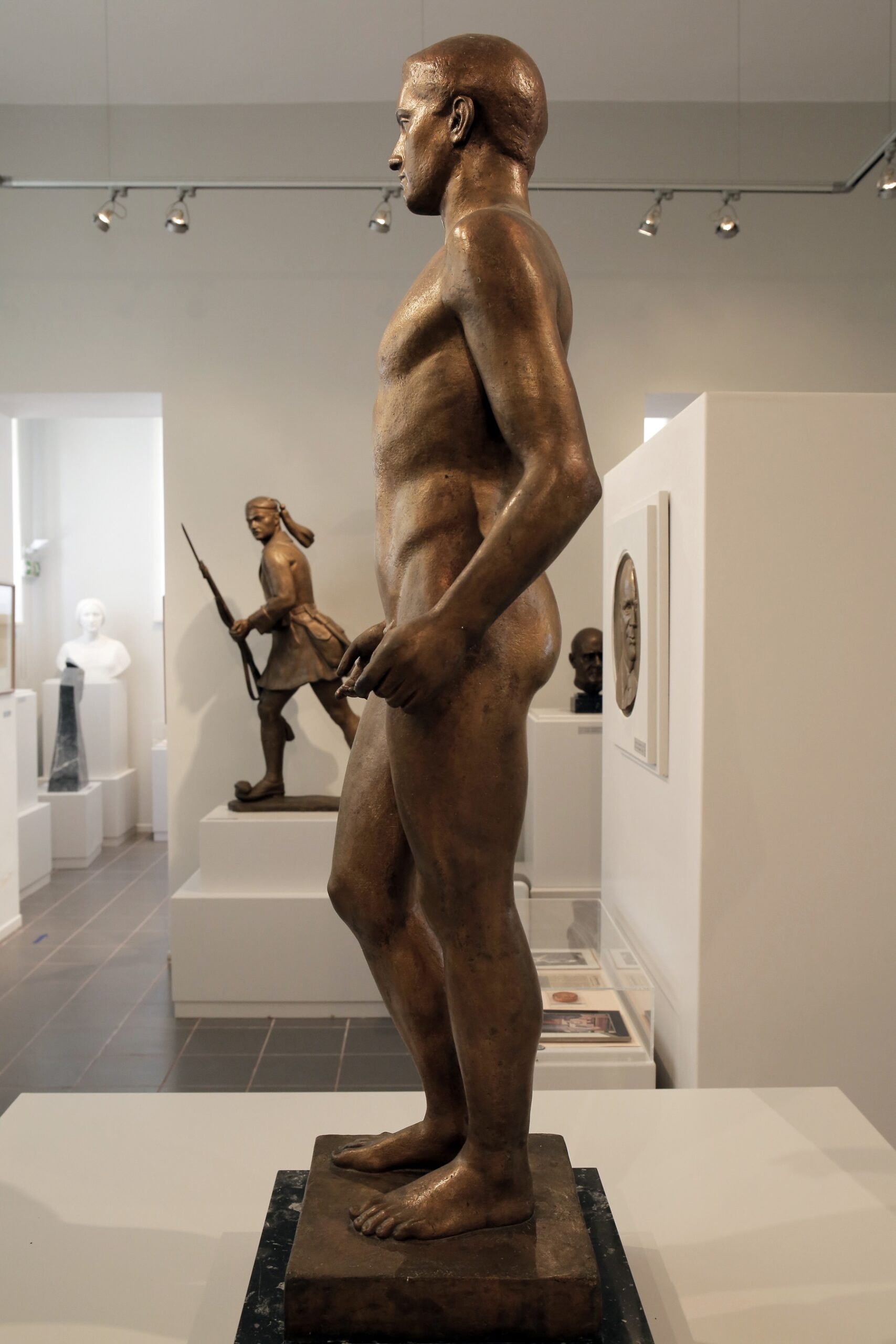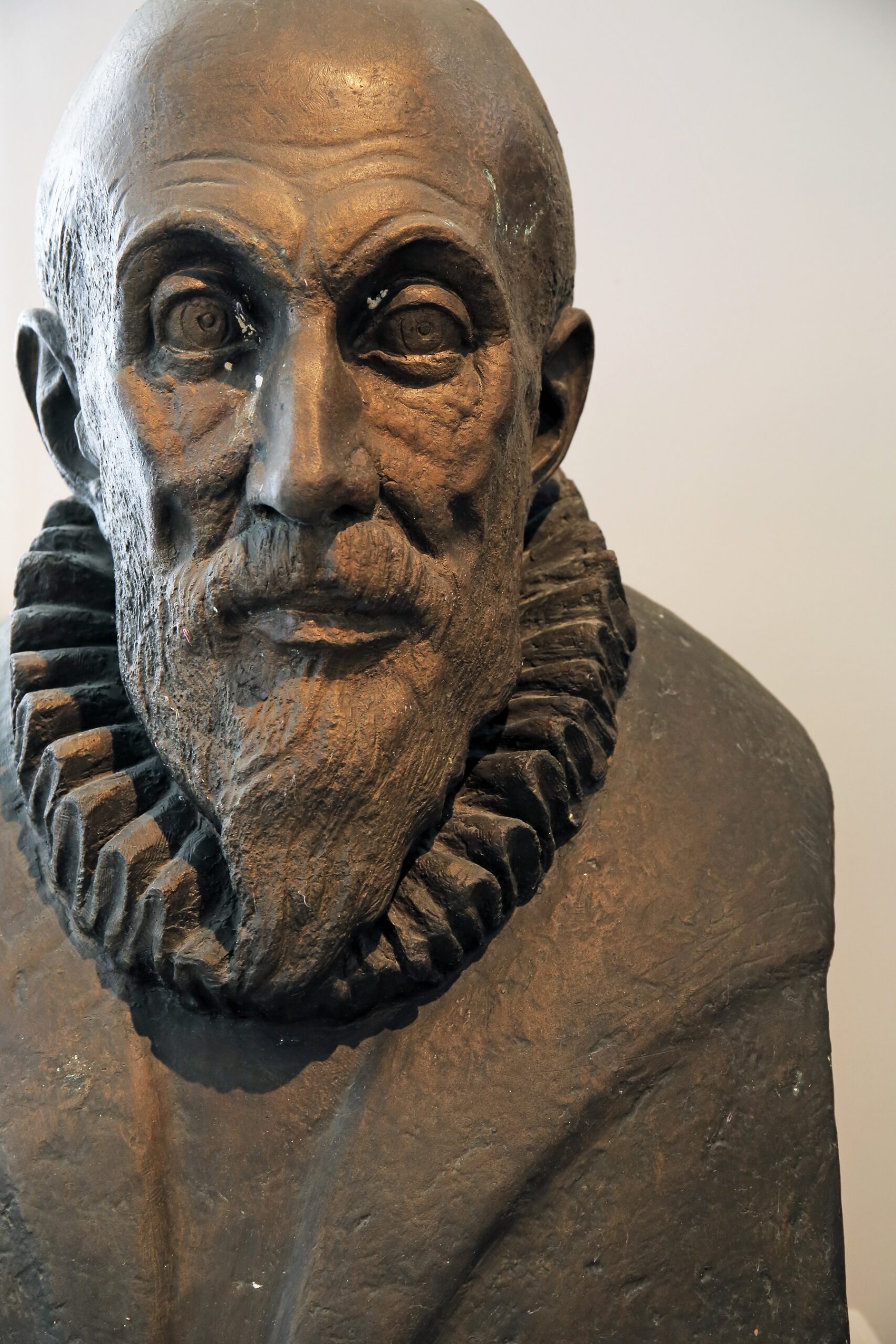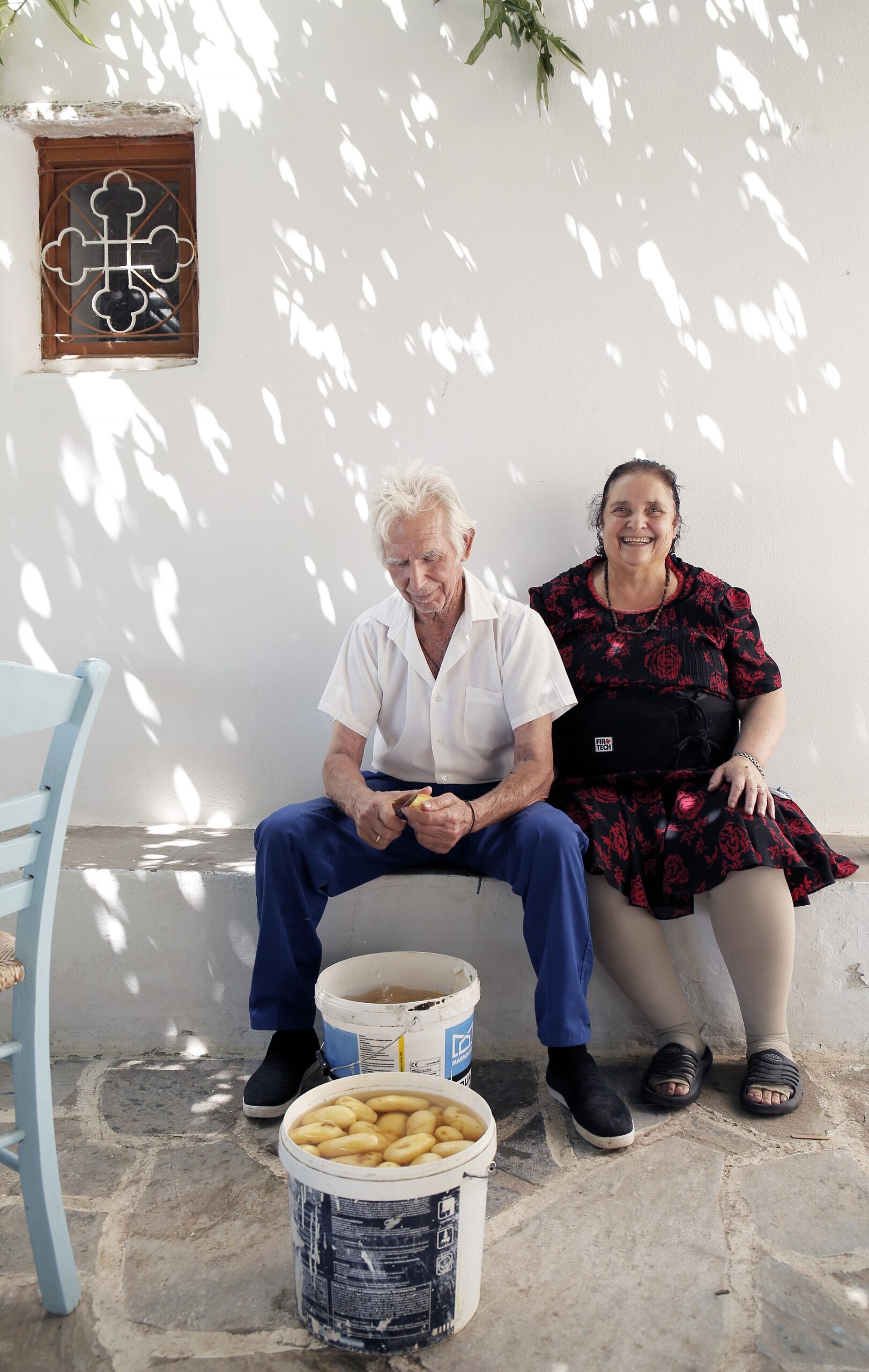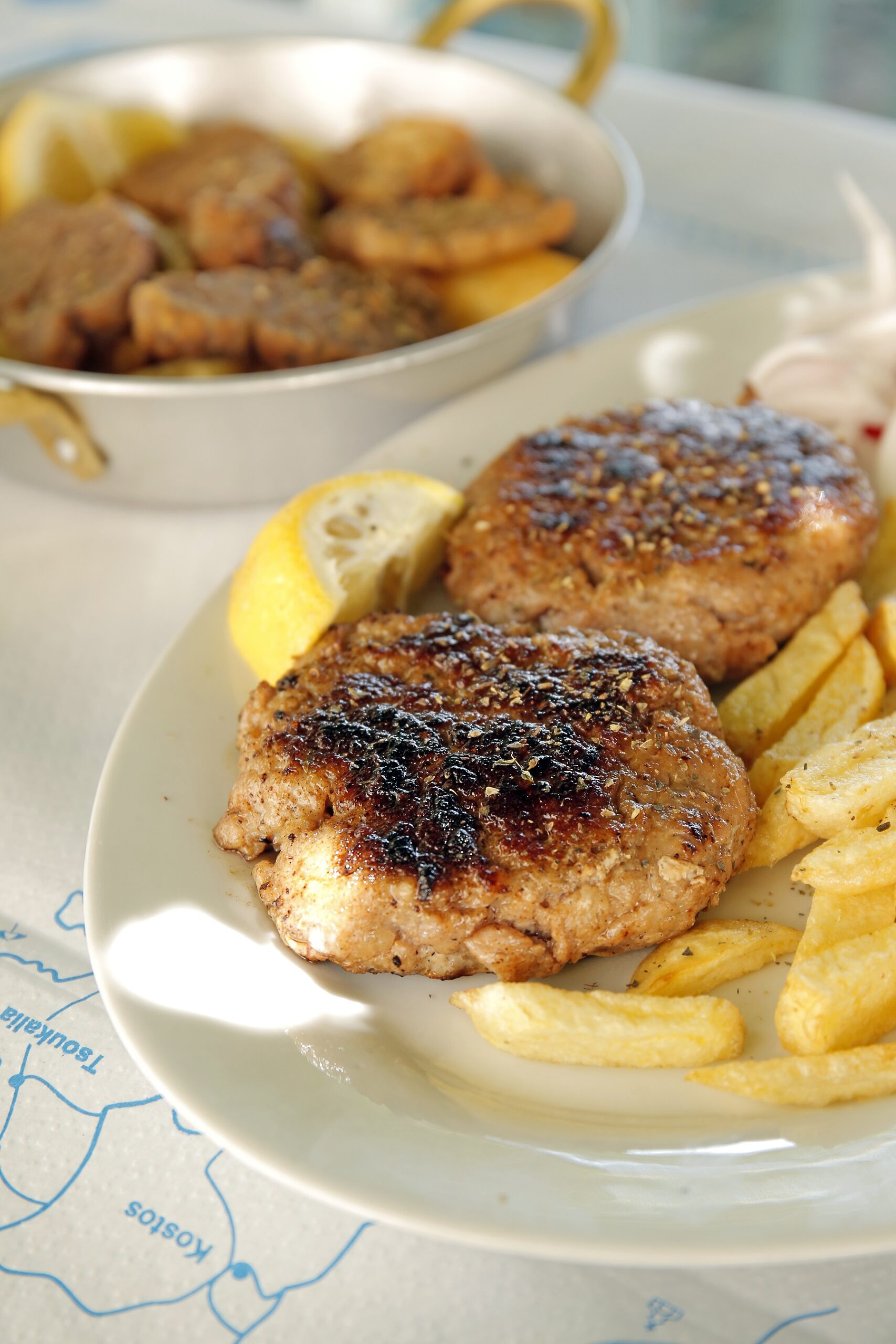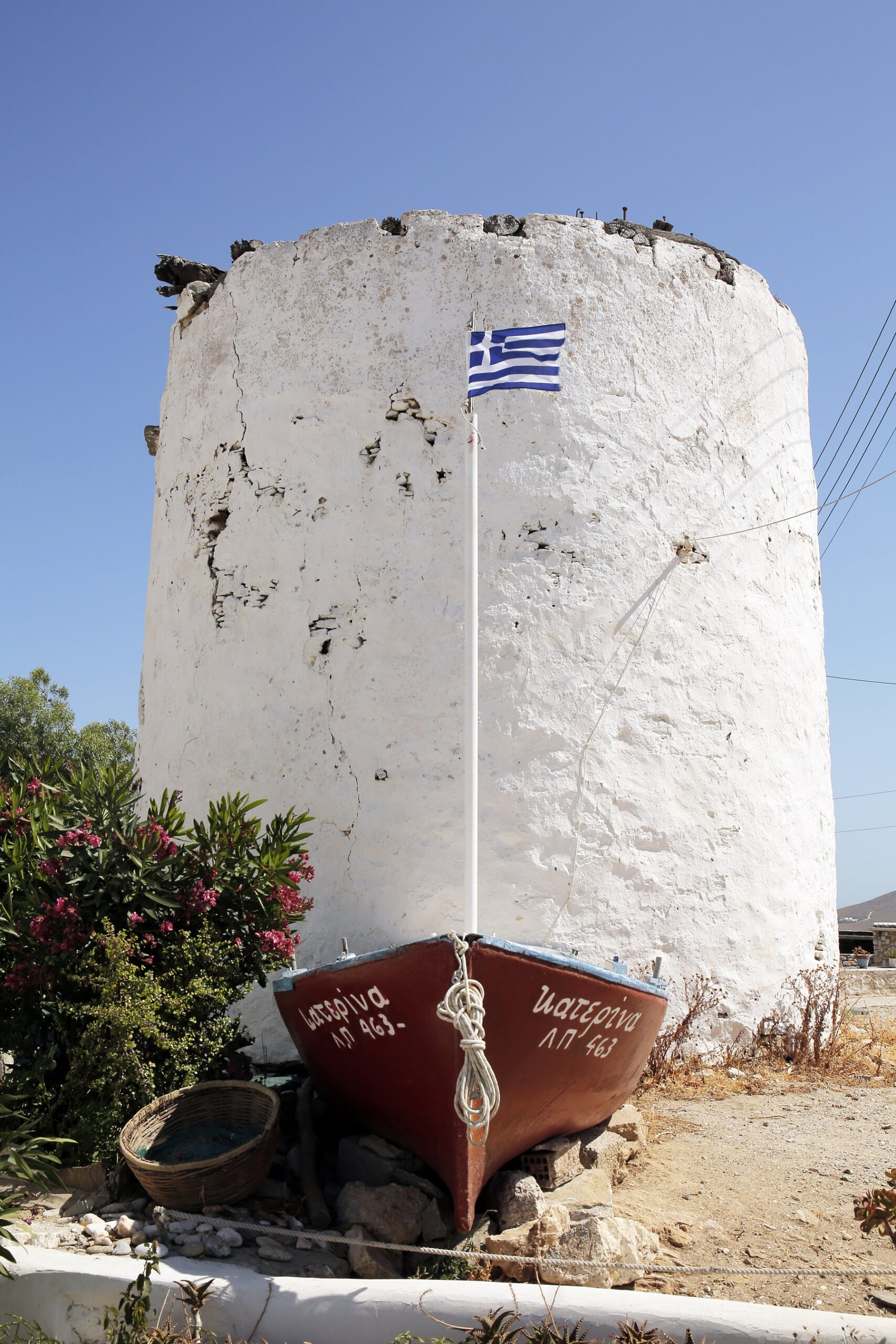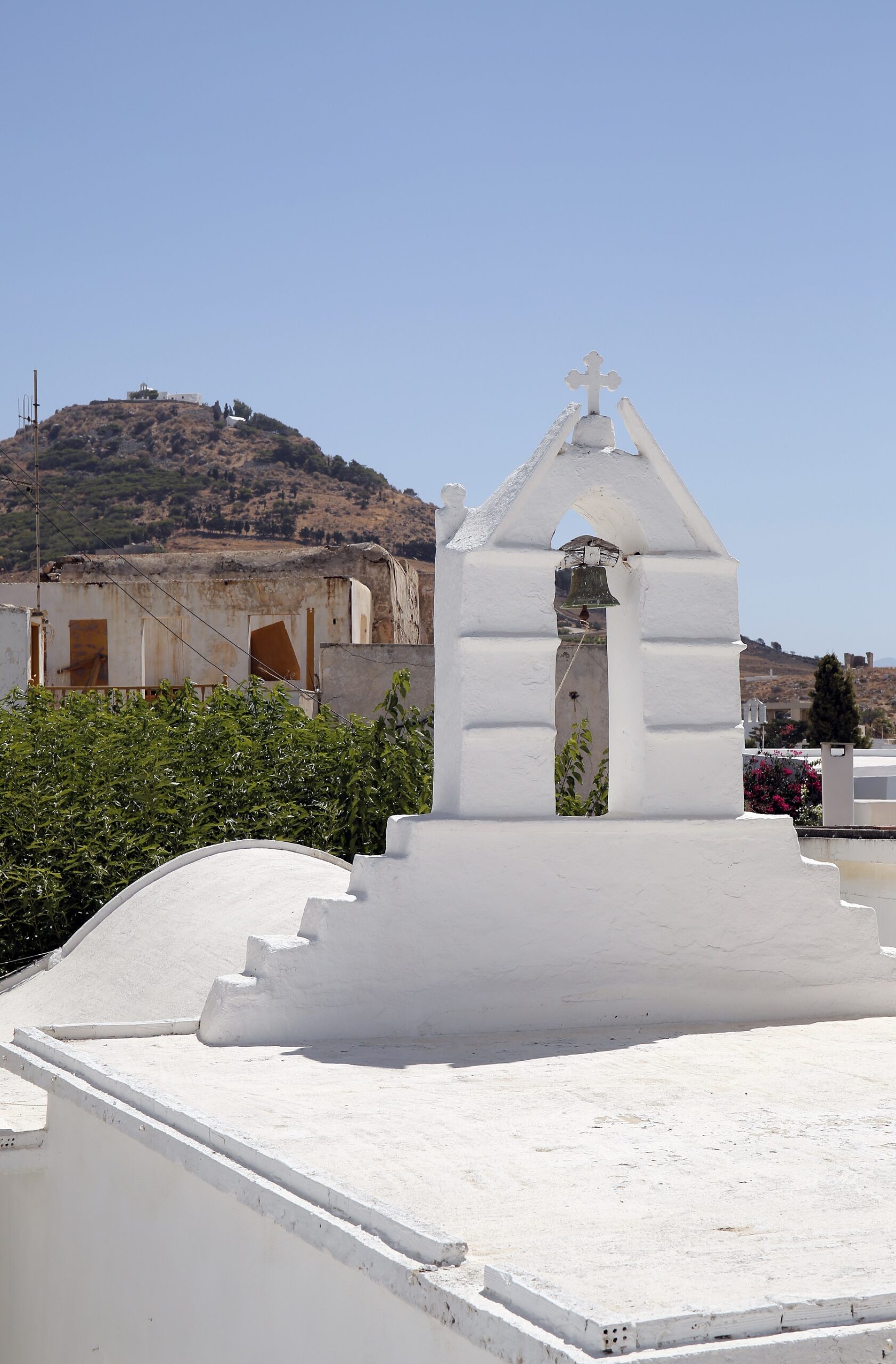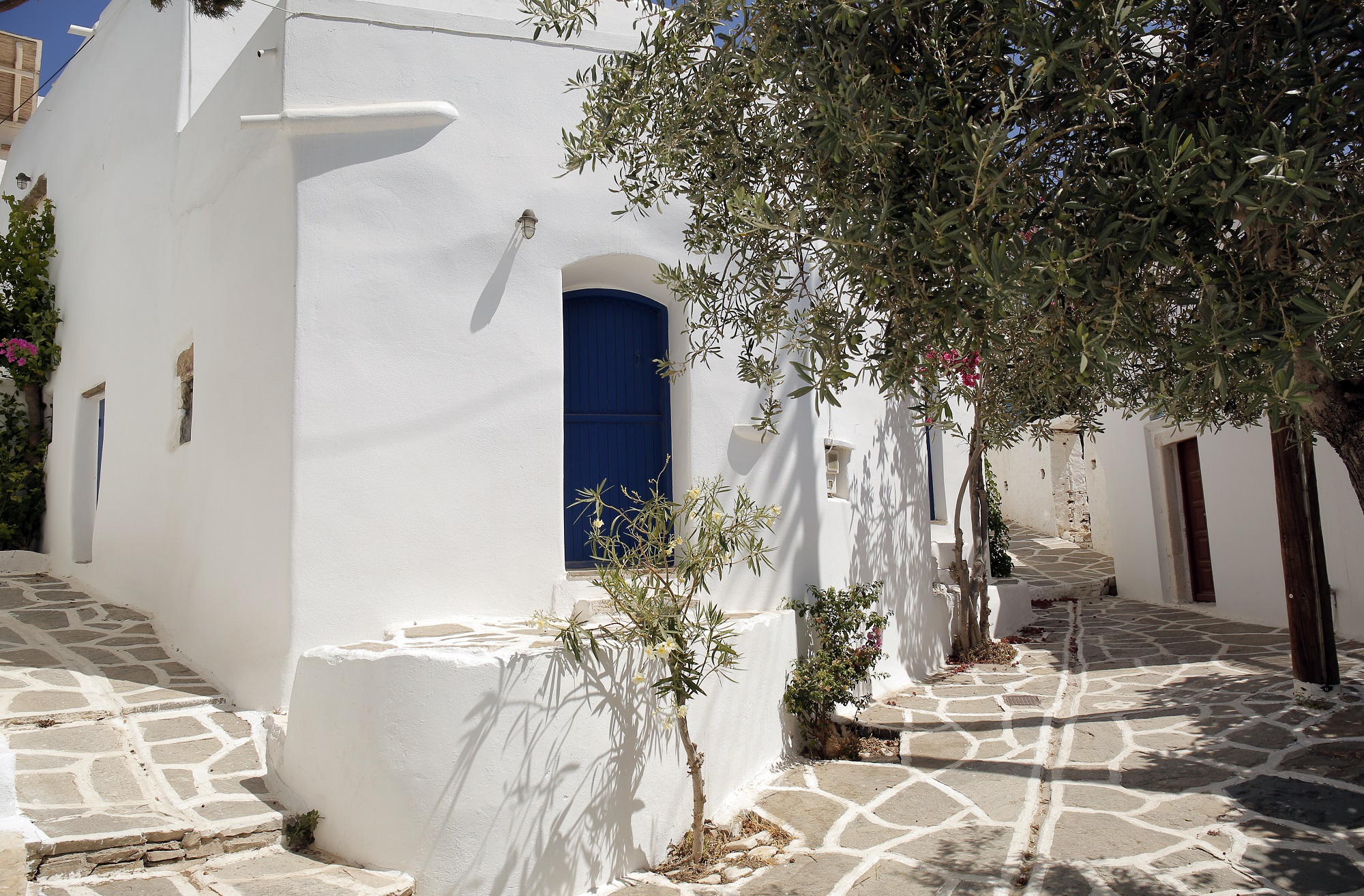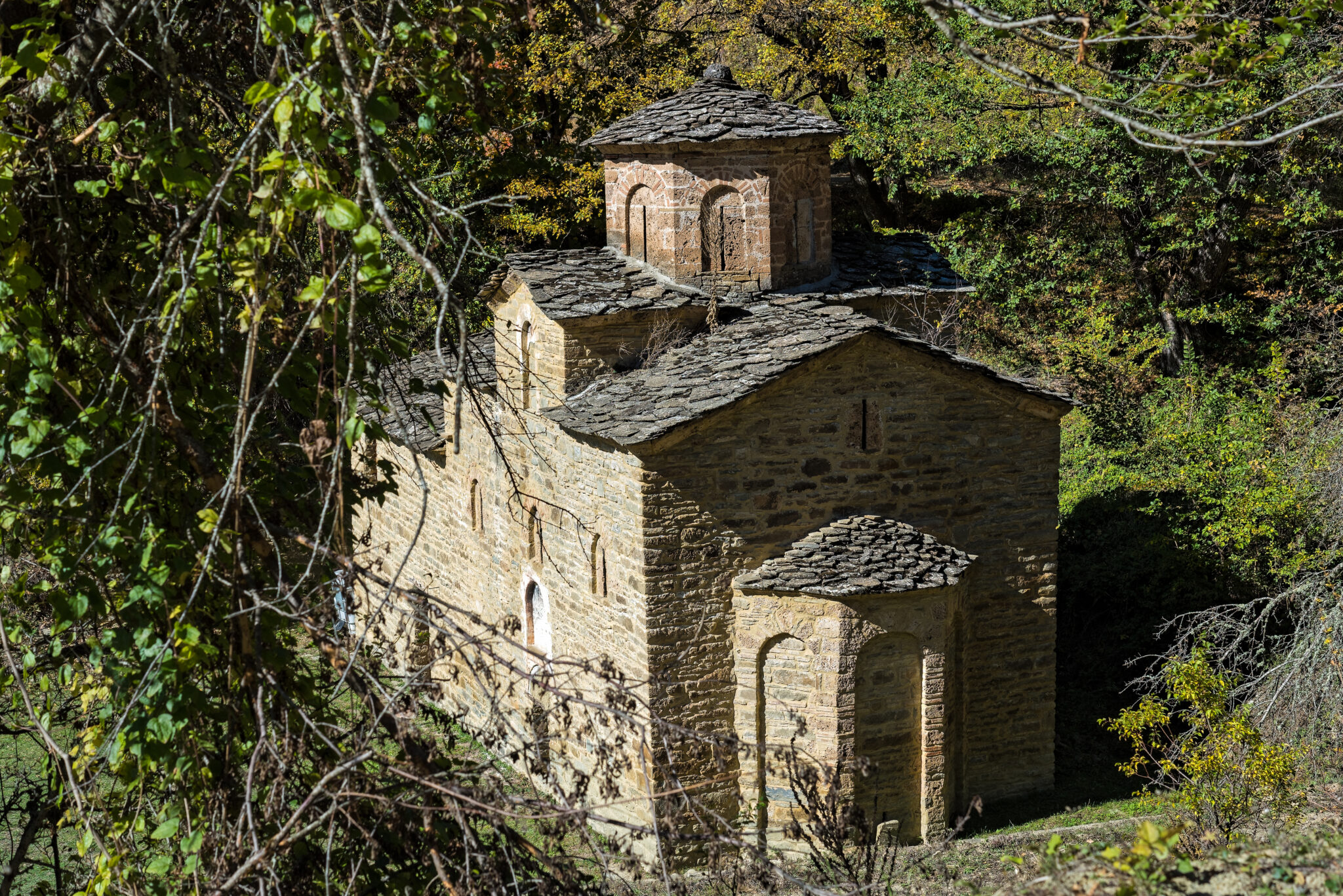A little further away from the cosmopolitan and crowded Naoussa-Parikia duo, in the island’s north, there is a different island. Paros’ mainland seems to be regaining its genuine Cycladic colour. Not that there are no signs of assertive development here too, it’s just that the place is still so beautiful that you will, most likely, ignore them.
A tour of the area will take you to villages with rich history or just irresistibly beautiful and authentic. Full of whitewashed narrow streets and white, cube-shaped houses, next to fields and dry-stone walls, with little churches, dirt roads and the smell of fragrant herbs lingering in the air everywhere.
In Lefkes
The semi-mountainous Lefkes, built amphitheatrically at an altitude of 250m, in a verdant location, is a truly beautiful village. Despite being quite popular, its dynamic is so strong that it is still resisting change. If you find yourself here in the morning, when it is cool and visitors are still few, you will love the Cycladic breeze and the endless view of the Aegean Sea and of Naxos. You’ll walk along Ramnos –the main street– past grand buildings such as the Artists House, the municipal building, and the primary school, and you’ll reach the main square with the majestic pine.
As the shops, open one by one, you will drink coffee and have some bread with butter and honey, and maybe a rizogalo (rice pudding), and return in the evening for smoothies and cocktails. Make sure to stop at the café “Aggelantonis” (tel.: 0030 2284 044085) before you start walking down the so-called Byzantine road. It is estimated to have been built around 1000 AD and is the oldest road in Paros – one of the many that lead from the mountain villages to the sea. Similar to other Greek islands, for hundreds of years, the fear of pirates determined the settlement dispersion in Paros.
The road leads to a small square with a lovely (abandoned) ochre-coloured building with blue doors, and the word “Kafenio” written on it. Indeed, it used to house one of the most beautiful coffeeshops in the Cyclades, the “Kafenio tis Marigo’s”, which is now in a new location, a little further down the road. At this point the Byzantine road turns into a path. So, if you love hiking, you can follow it and reach the village of Prodromos after about 3.5 km.
Continuing towards Agia Triada square, you’ll feel the amazing charm of the tangled narrow streets of the Cyclades, walking alongside thick, whitewashed walls, between bougainvillea trees, under arches. Passing under one of these arches and climbing a few steps, you will be charmed by the “Pezoula tis Lihoudias – Sweet Smelling Kitchen” (tel.: 0030 2284 043189) and its small, fairy-tale terrace. Here, Mrs. Polina and her daughter Anna prepare handmade pasta, pies, cakes, and stews – gemista (stuffed vegetables), imam, etc.– along with delicious pasta dishes. In addition, they also give lessons on breadmaking and filo spreading. Reservations required.
Returning to your exploration, you can’t help but be surprised by the contrast between the imposing church of Agia Triada and the humble houses around it. It stands on a small hill and has two huge bell towers, which force you to tilt your head backwards to take in their full height. Its altarpiece is marble, an excellent work of a Tinian sculptor, and it is considered the second most magnificent church on Paros after the sublime Ekatontapiliani.
The new location of the aforementioned “Kafenio tis Marigos” (tel.: 0030 2284 044014) is across the street from the imposing Agia Triada church, with a huge bougainvillea half-hiding its entrance. It offers coffee, delicious orange pie, homemade lemonade, as well as mezze to go with souma (a strong traditional drink, like tsipouro or raki made from the distillation of grape marc) and beer.
Back on the main street, if you are hungry enough, you can take a seat on the terrace of the famous meat tavern “Klarinos”. Leaving Lefkes, you can also buy sourdough bread from “Xilofournos tou Strati” (tel.: 0030 2284 044090), which has been in operation since 1908 –in fact they grow their own barley. It’s good to also know that towards the end of August the “Karavola Festival” takes place here: a big festival with traditional island songs, local dishes and wine.
In Kostos
On the road from Parikia to Lefkes, make a long stop at the village of Kostos. Below the quarries of Paros, surrounded by nature, it is a real “balcony” with a view of the Aegean Sea, of the beach of Molos and of Naxos.
Small, scenic, low-key, with all-white houses, whitewashed alleys and cute cafés, Kostos is a beautiful village, with two churches in its centre, which deserve your attention: the stone-built church of Agia Marina and that of Agios Panteleimon –patron saint of the settlement– built in the 17th century next to a lovely little grove.
Kostos is the birthplace of the great teacher, Saint Athanasios Parios (celebrated on June 24) and you will find his monument in a central location in the village. Just outside the settlement, you can see the old communal washhouse –that has been renovated– while the settlement of Marathi is also nearby. A path to the ancient quarries of the island starts in Marathi. In addition, there’s a chapel dedicated to Agia Ipakoi (Agia Pacou, the locals call her), which gives its name to the new meat restaurant “Santa Pacou” (tel.:0030 697 2424 104). Elegant, dressed in white, with a dreamy terrace, it enjoys endless sea views, while looking like a quiet retreat.
Among other things, “Santa Pacou” serves mama-Maria’s chickpeas and pork shank sourced from local farms, slow cooked with wild herbs. While you’re here, of course, it would be a shame not to visit Greek ceramist Stelios Gkikas’ studio “Studio Yria” (tel.: 0030 2284 024359). His refined clay and porcelain work is uniquely Cycladic and ranges from functional objects such as plates, cups, bowls, etc., to jewellery and decorative pieces ideal for wedding and christening favours.
In Prodromos
Near Lefkes, you’ll find Prodromos village. If you walk on the Byzantine road that we mentioned earlier, you’ll be able to forget anything resembling mass tourism. Occasionally there are spots of dirt road, but the most part is tiled and goes among olive and myrtle trees and dry walls, next to wild oregano and pennyroyal In addition, it goes over a bridge, up a mountain with views of the entire east Paros and ends downhill in Prodromos.
Whichever way you choose to get there, what you’ll see when you reach the village is quite different from the impressive and crowded Lefkes. Prodromos is a quiet village with a distinctive fortification wall around it, remnant of the Middle Ages (again due to the fear of the pirates): the houses’ outer walls constitute the fortress walls. The three chancels, belonging to two consecutive churches – one stuck to the other and all of them part of the fortification are very impressive. The arched gate with a bell tower on its top is also part of the fortification and constitutes the barrier preventing cars from entering in the village.
Before you start exploring the village, at the small square in front of the gate, you’ll find the historic tavern “Tsistsanis” (tel.: 0030 2284 041375). They have a cool backyard, a working juke box inside, and lovely naïf paintings by local painter Giorgos Marmarinos, as well as a few tables out front. Apart from their meat dishes, make sure to order the oven-baked chickpea stew, the squab in tomato sauce –a rare delicacy nowadays–, as well as the courgette balls with red pumpkin and amazing kefalotyri cheese. The owner, Vlassis Roussos and his wife Maria Tzanakopoulou are in charge of the kitchen.
Inside the village, the houses are built close together, and have small gardens with flowers, the bougainvillea trees are in full bloom and the arches abundant. The church of Agios Ioannis Prodromos, that the village is named after, built in the 17th century, is located in the centre of the village and has many old icons and wooden sculptures. The cool is pleasant and the absence of cars welcome. At “Kalitechniko Kafenio” (tel.: 0030 2284 041375), right on the square, you can enjoy various delicacies prepared by Mrs Maria, like the great capers salad, baked aubergine with cheese and tomato, stuffed calamari, octopus in wine sauce and baked goat with potatoes, as well as shellfish that her husband, Mr Antonis catches.
And if you want to go swimming, the virgin, otherworldly and wild beach of Kalogeros is very close. It’s not serviced, so make sure to bring the essentials.
In Marpissa
You get in Marpissa from Prodromos in no time. In fact, be careful not to pass by Marpissa on the way from Prodromos, it happens a lot, since nothing betrays the village’s hidden beauty from the road. Park your car at the entrance and walk to the village and leave the experience of climbing the hill of Kefalos for later.
Marpissa is one of the most beautiful villages of the Cyclades, and together with Lefkes, the two most beautiful villages in Paros. Low-key, preserving its medieval authenticity, while the non-profit “Routes in Marpissa” has been organising the amazing, homonymous interactive cultural festival for 12 years now.
Here, a lovely maze of narrow alleys, churches, houses and mansions awaits, with the Cycladic houses forming “sculptures” which reveal themselves when you stroll under the arches.
Some of the houses in the village were built as early as the 16th and 17th century, but most of them have been destroyed. Mrs Marigoula Anousaki-Fysilani’s house remains intact, and in a past version of “Routes of Marpissa” it was open to visitors, as is the Aspropoulos residence, built in 1608, that is open to visitors but is not inhabited. The house of the hero of the Greek Resistance, Manolis Glezos’ grandmother was built in the 16th century, though now it has been destroyed.
Mrs Marigoula Anousaki-Fysilani, learned to use the loom when she came to take care of her mother. It was the largest in the village, so it was used as a common area for social events. She gives us an idea of the conditions in which people lived in those times, telling us, for example, that while renovating the house, they found an opening behind the oven door that led to the backyard: it was used to escape in case of pirates.
Twenty generations have stayed in the house where she displays her textiles It’s overwhelming to feel that you share with them the view of Sikinos, Ios, Irakleia and Naxos, drinking coffee on the house’s terrace. You’re almost overwhelmed thinking of the dreaded pirates of the Aegean approaching.
Most of the more modern houses in the village are renovated, well-kept and functional. There is also the well-organized “Nikos Perantinos” Sculpture Museum, while make sure you call before visiting the Folklore Museum. The Metamorfosi tou Sotiros church with icons of the 16th and 17th century, is very impressive.
There are no shops in Marpissa, but you’ll find the amazing “I taverna tis Haroulas” (tel.: 0030 2284 041440), that serves food in the square, under two enormous mulberry trees. Mrs. Haroula, together with her son Irineos – and with the help of her beloved husband Nikos, with whom they have been married for 56 years (and declare themselves as much in love as the first day they met) – prepare a panorama of Paros cuisine including the best tomato balls, rabbit patties, breaded brains, fried beef testicles, aromatic fennel pies, kalogeraki (aubergine stuffed with chicken and cheese served with tomato sauce), fried stuffed courgette blossoms, and much more.
In Marpissa, there is also the Louridis winery (www.louridis.gr), which is open to visitors, as well as the “Parion Cheese Factory” (Agia Anastasia, tel.: 0030 6973525591), which was established by Katerina Moschou. There, they produce amazing traditional spicy touloumotiri, dry anthotyro, fresh myzithra, ladotiri, yoghurt etc. Finally, on the road from Naoussa to Marpissa, stop at Nikos Zoumi’s “Xilofournos” (tel.: 0030 2284 052750), for great bread, sourdough, and Paros multigrain – both without yeast– a nice homemade slow-ripened bread, various baked goods, and pastries, as well as ice cream made with local milk.
Climbing the hill of Kefalos (Agios Antonios)
Leaving Marpissa, you’ll cross over to the three windmills. From there, you’ll start the unique experience of climbing the hill of Kefalos, at 229m.
The route starts on asphalt and then becomes a dirt road, winding and a little steep, until the top, where the ruins of a medieval castle stand. Here, you’ll find yourself among the remains of fortified towers, churches, houses and water tanks, enjoying a complete and unparalleled view of the eastern side of Paros, of the Aegean Sea and of Naxos.
The restored monastery of Agios Antonios was built around 1580. The church of the Evangelismos tis Theotokou (Annunciation of the Virgin Mary) is also restored, the lintel dates to 1410, and the castle dates to the late 13th or early 14th century, according to researchers, and was destroyed by the terrible pirate Barbarossa in the 16th century.
Festival “Routes in Marpissa”
This year, the main theme of the “Routes in Marpissa” festival (26, 27 and 28 August) is “Harvest in the Parian Katoikia”; the harvest season as it was traditionally experienced in the local communities of the island outside and around the settlements, in the characteristic “katikés” (buildings where they stored tools and where the farmers rested), becomes an occasion to bring to life the stories and practices of people who lived with self-sufficiency, wise frugality and respect.
So, there will be various sites of interest in the traditional settlement of Marpissa, inspired by the Parian “katikés”, their philosophy, and their way of life, open to visitors from 19:00 to 22:00 throughout the three days of the festival. The festival’s aim is to take young and old alike on a thematic journey through the past, present, and future, via activities and interactive games. Entrance is free. For more information, visit www.stimarpissa.gr.
This year’s award for the story “The ‘katikés’ of Paros: traditional rural architecture as a symbol of sustainability and cooperation” from the European Heritage Days Stories 2022 program is of course particularly honourable. An initiative of the Council of Europe and the European Union, in which the “Routes in Marpissa” also participated.



